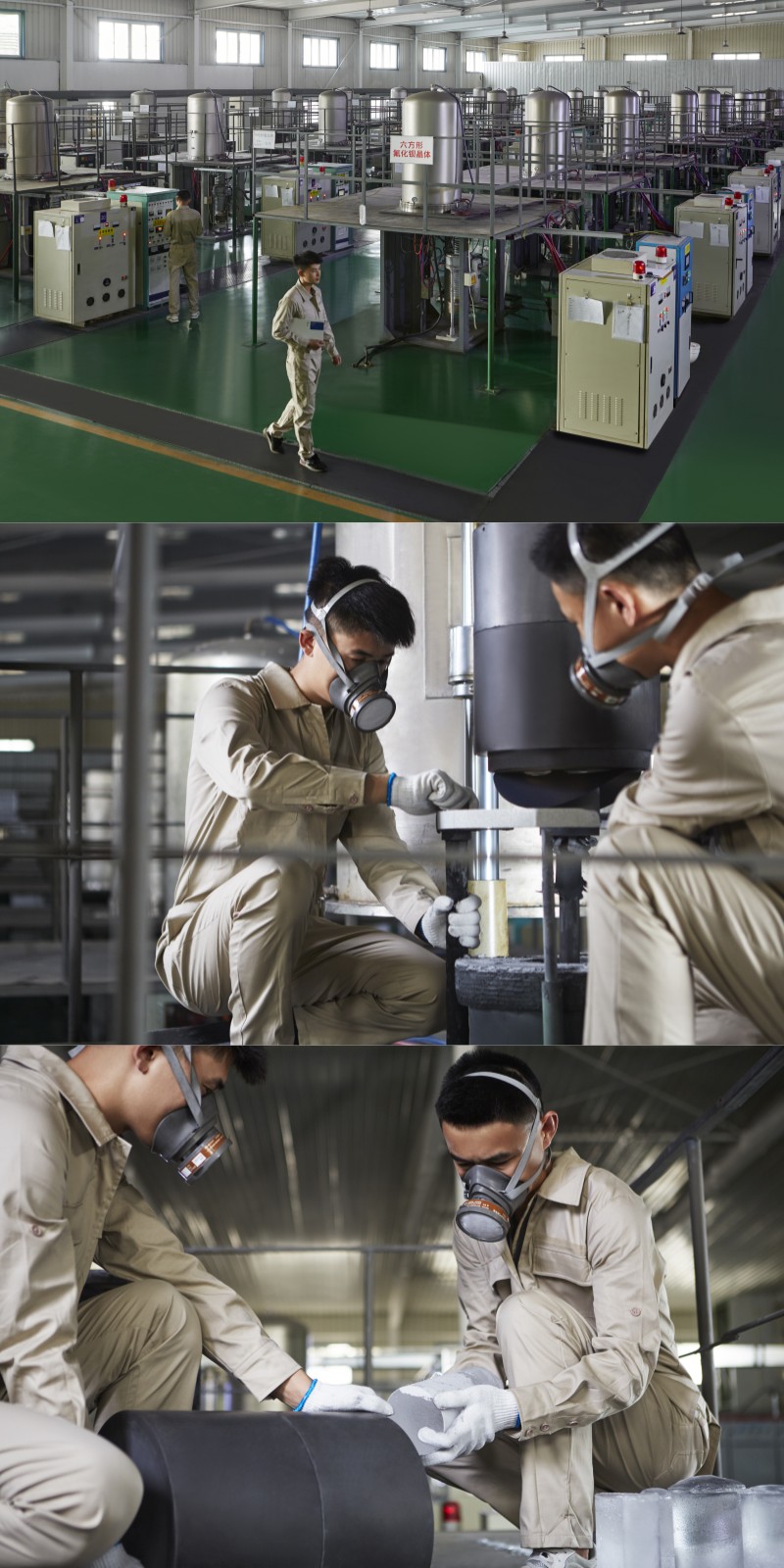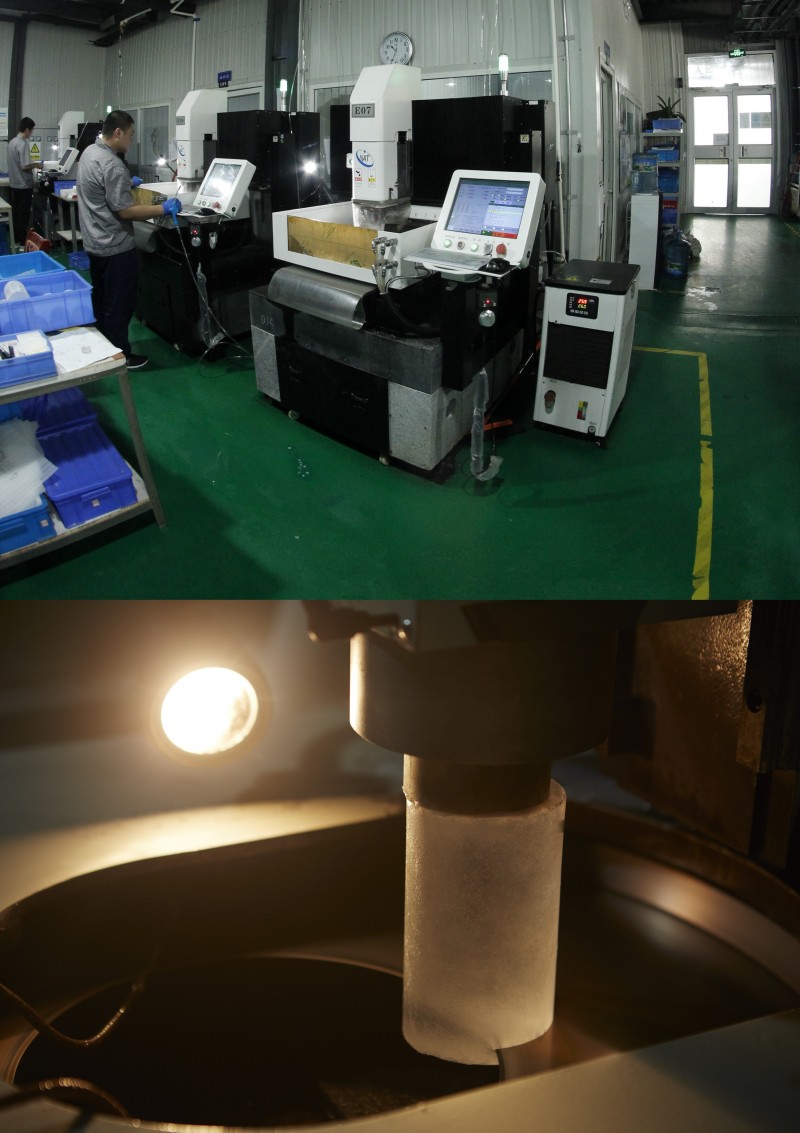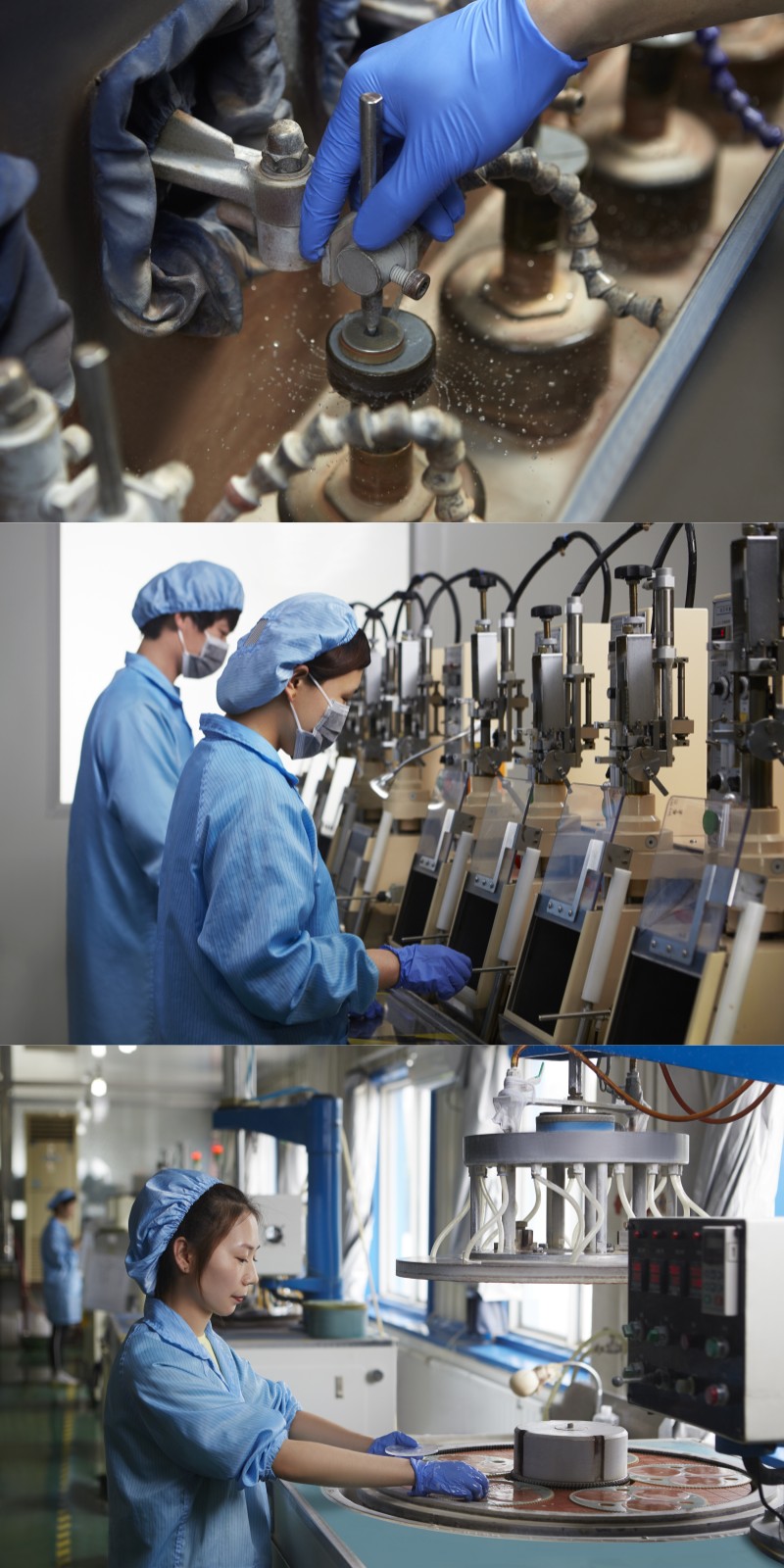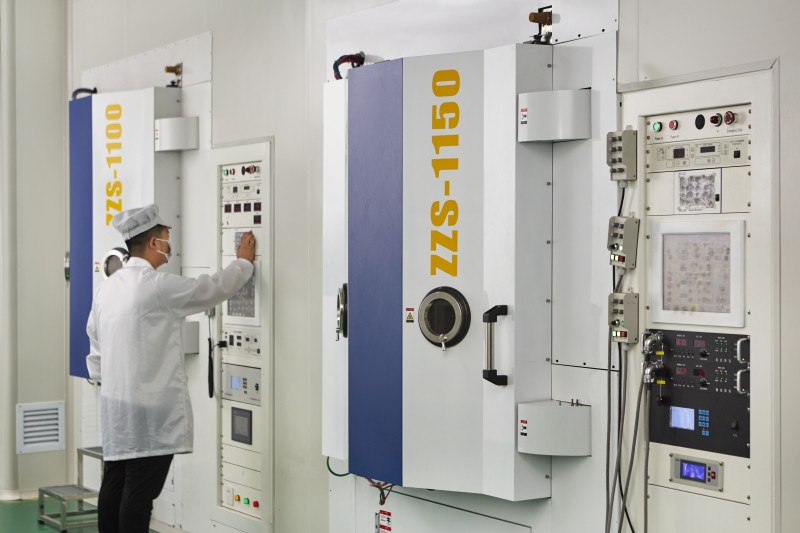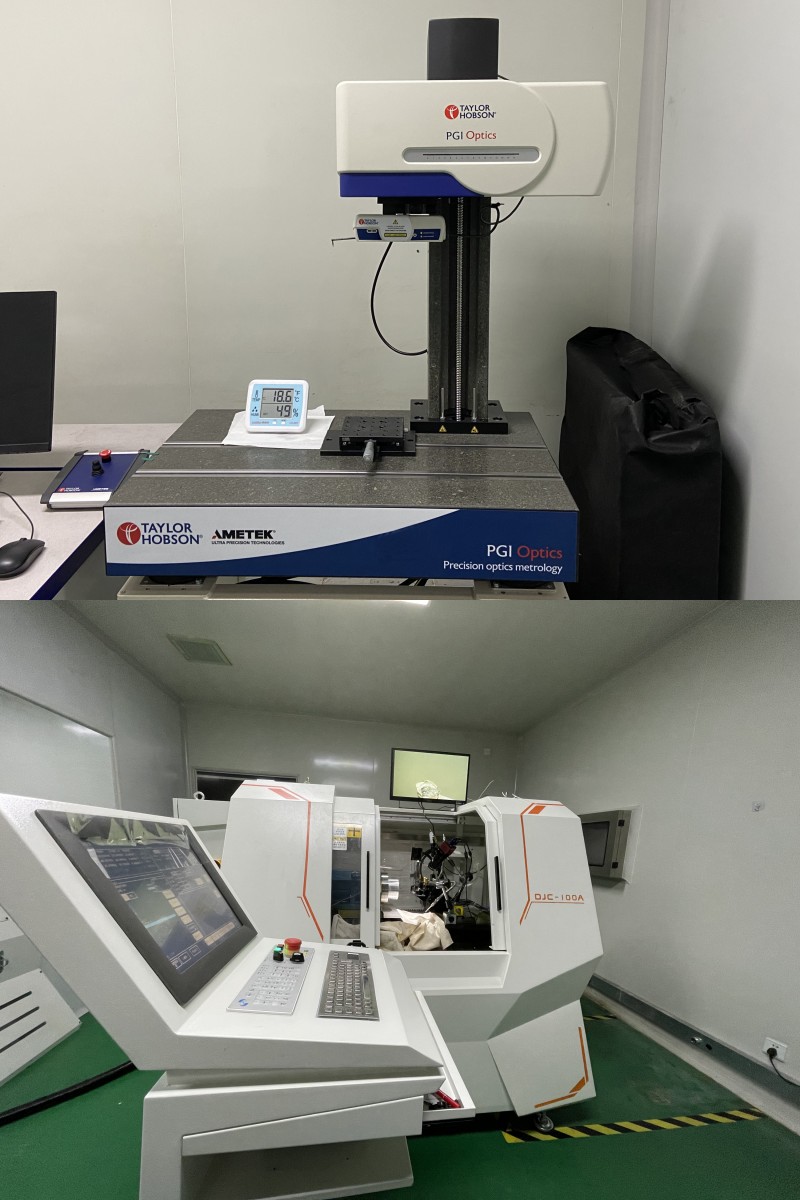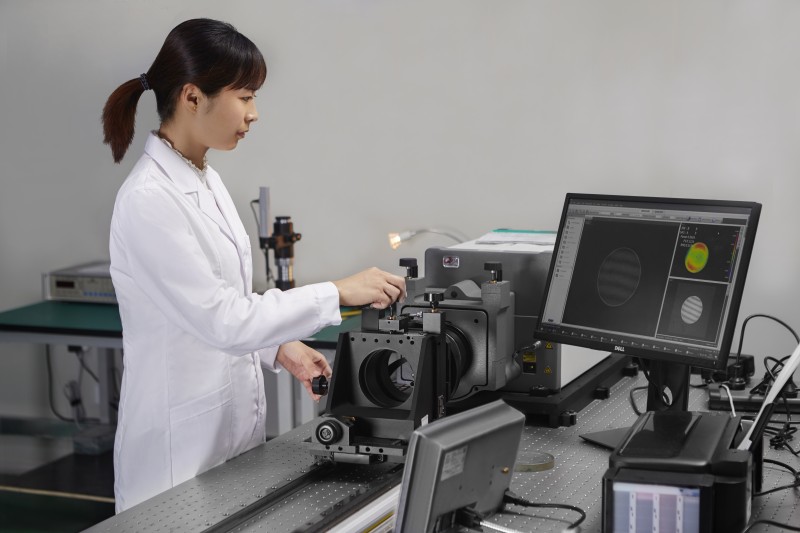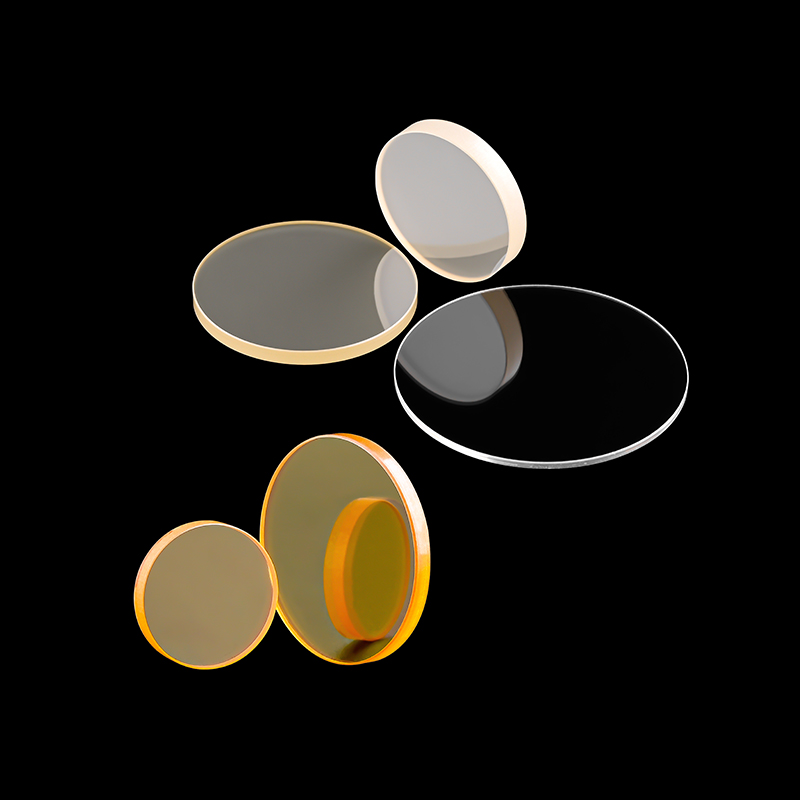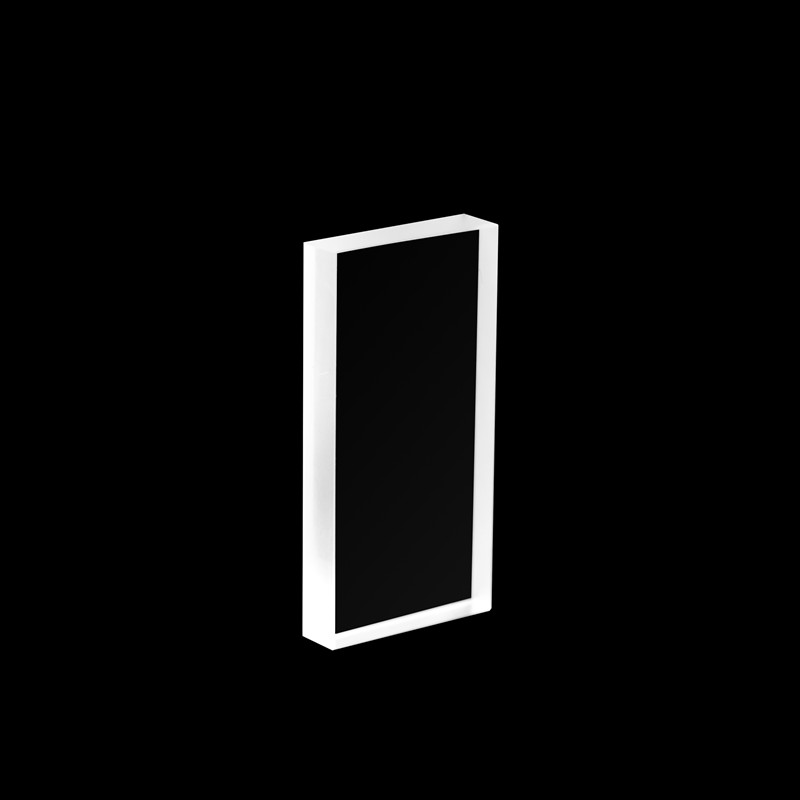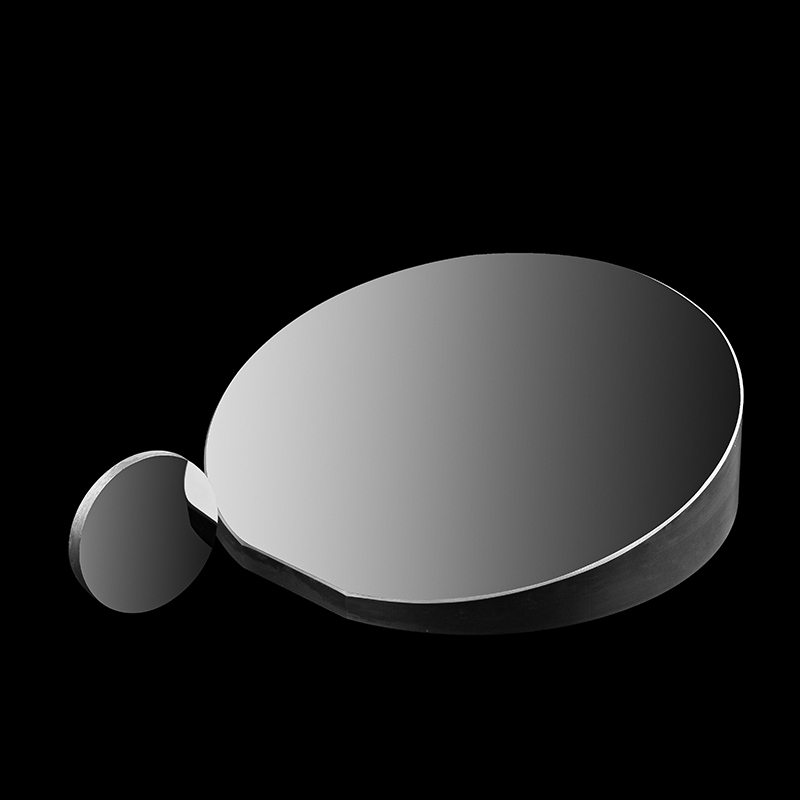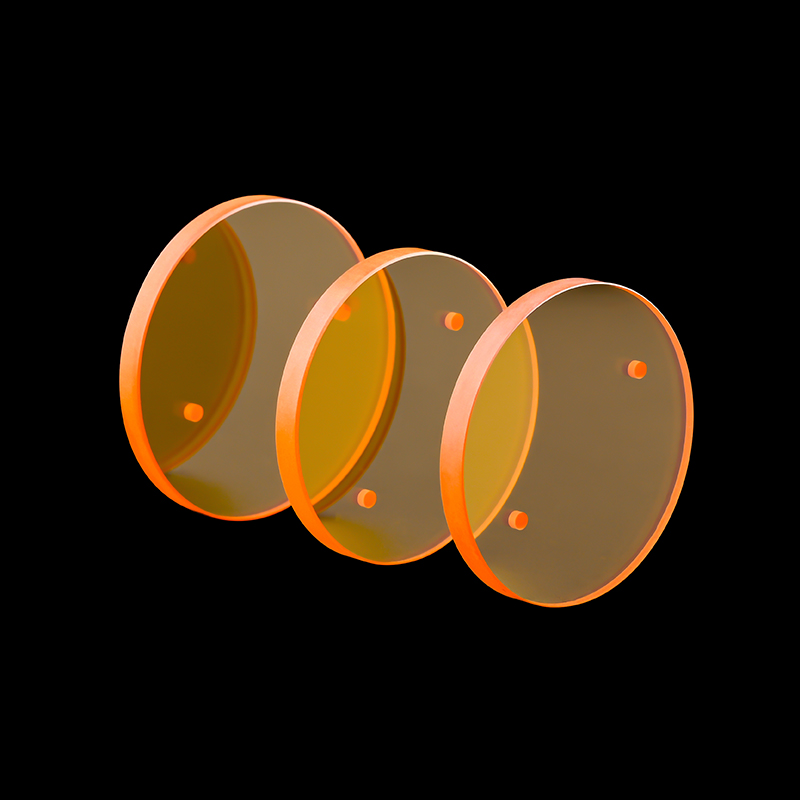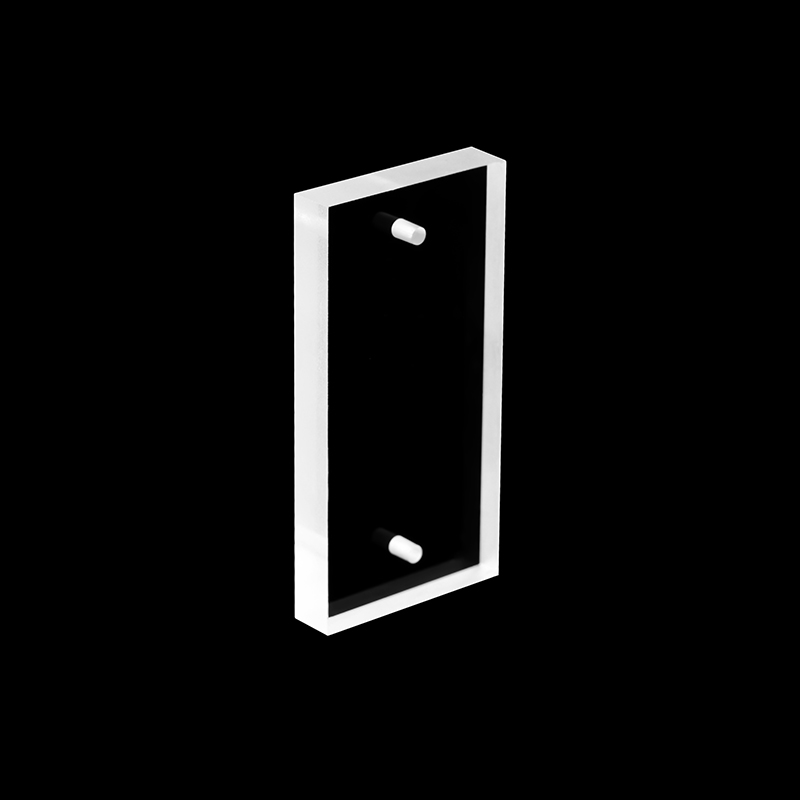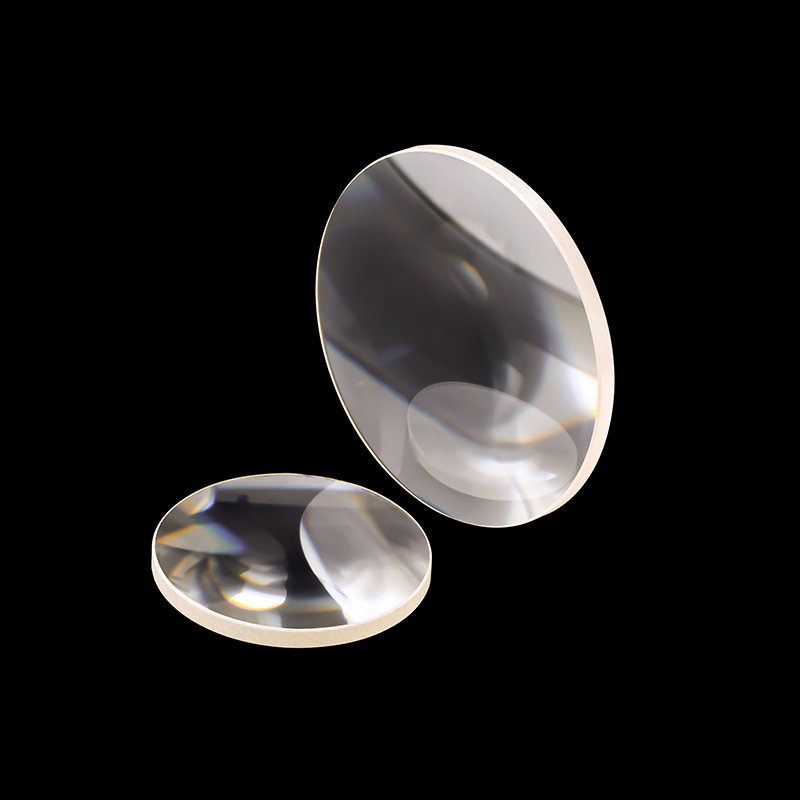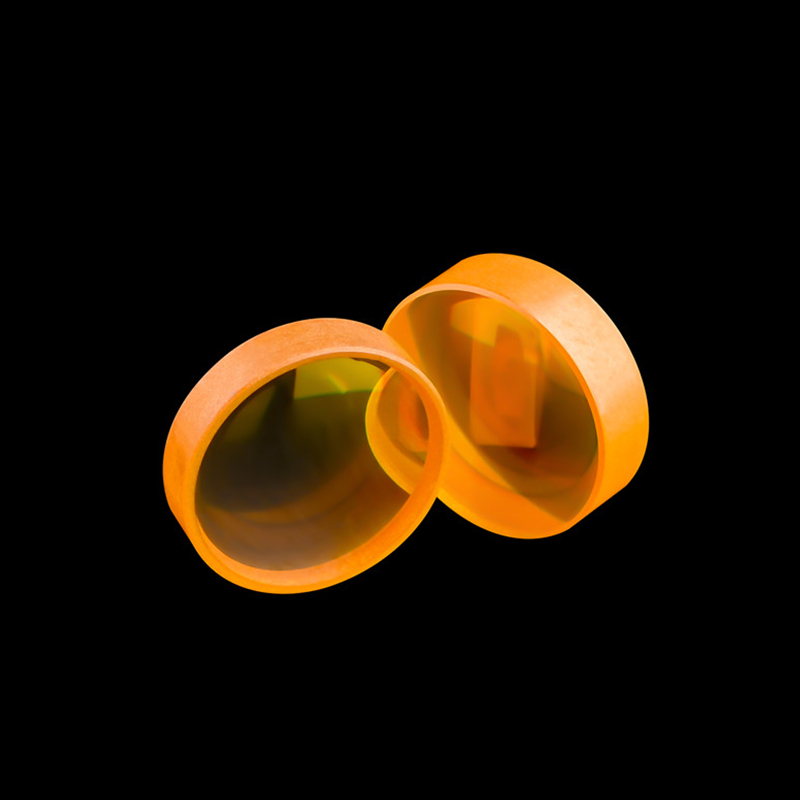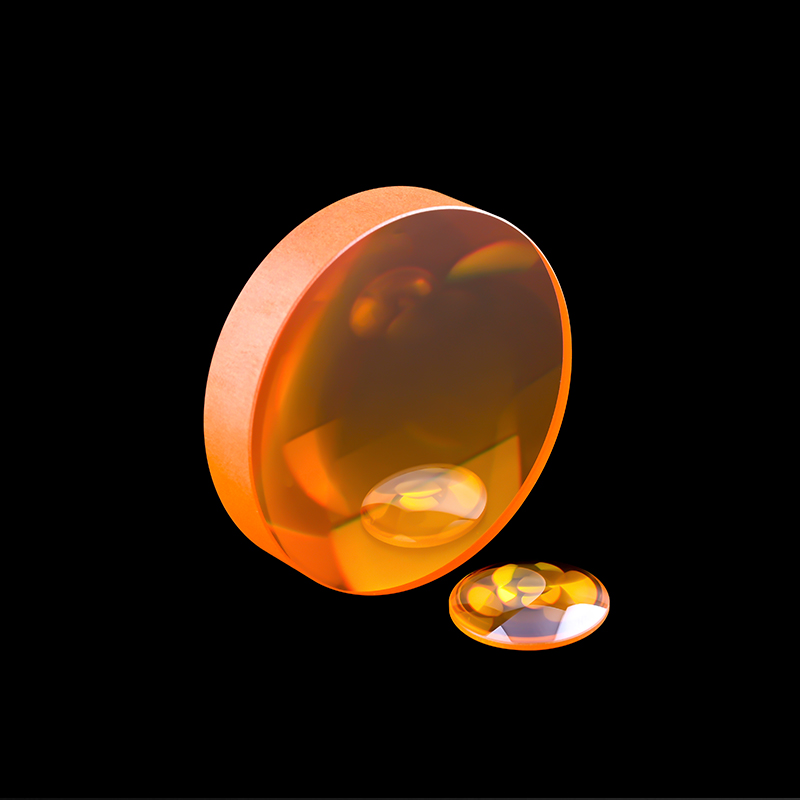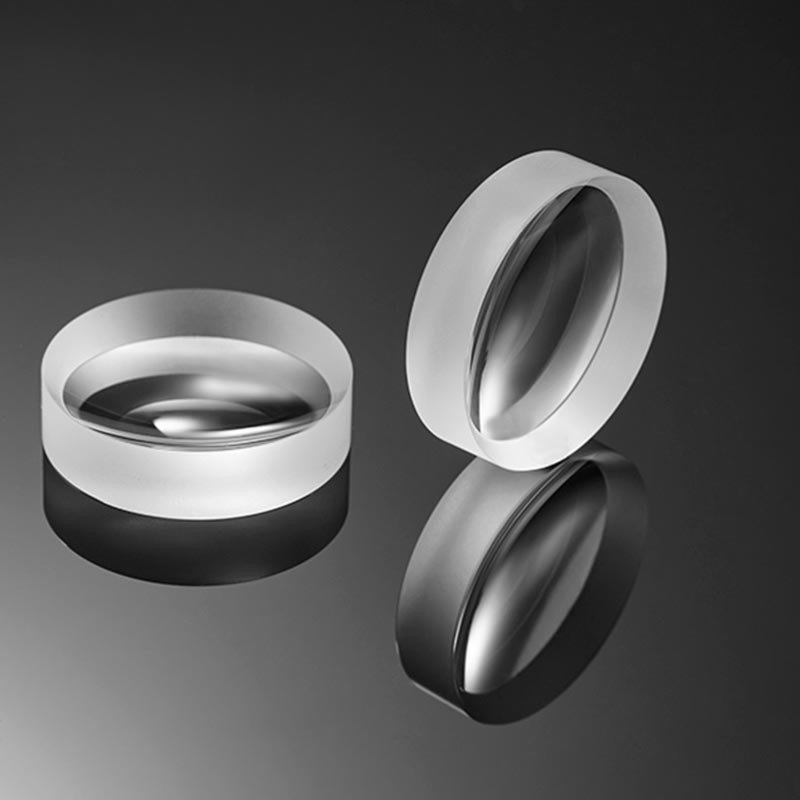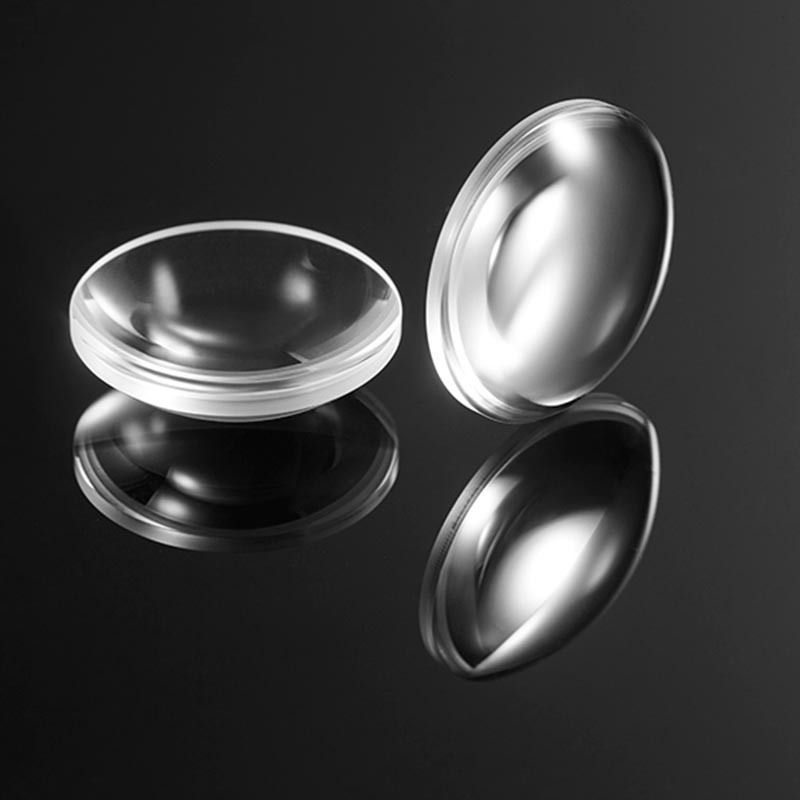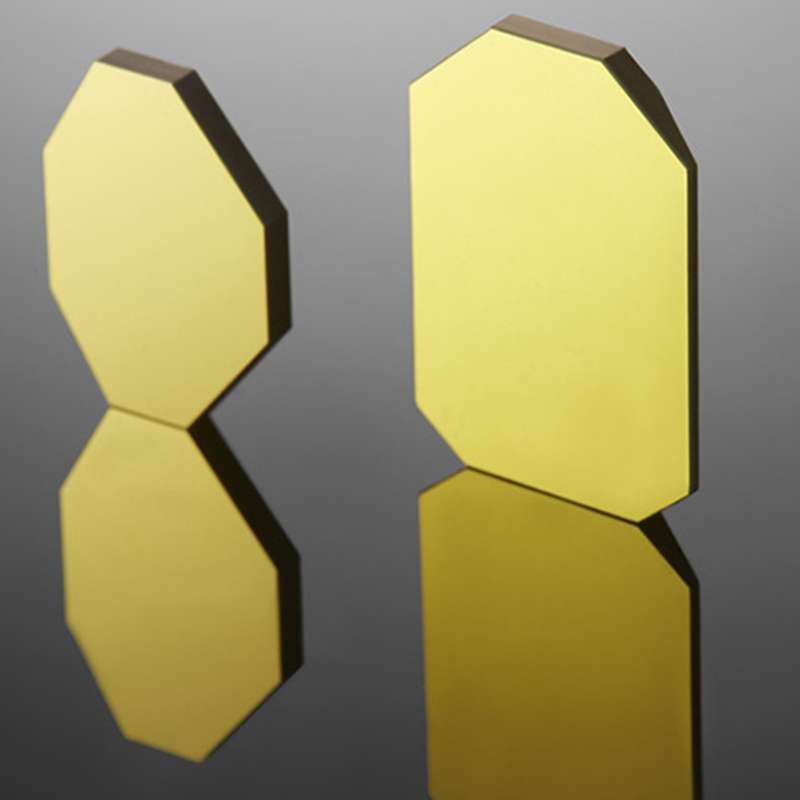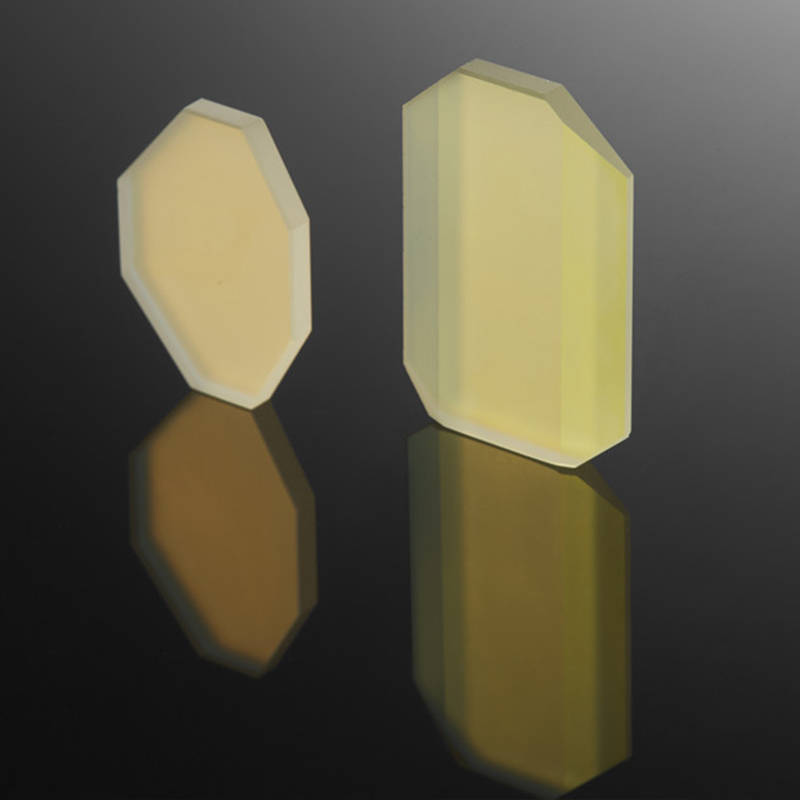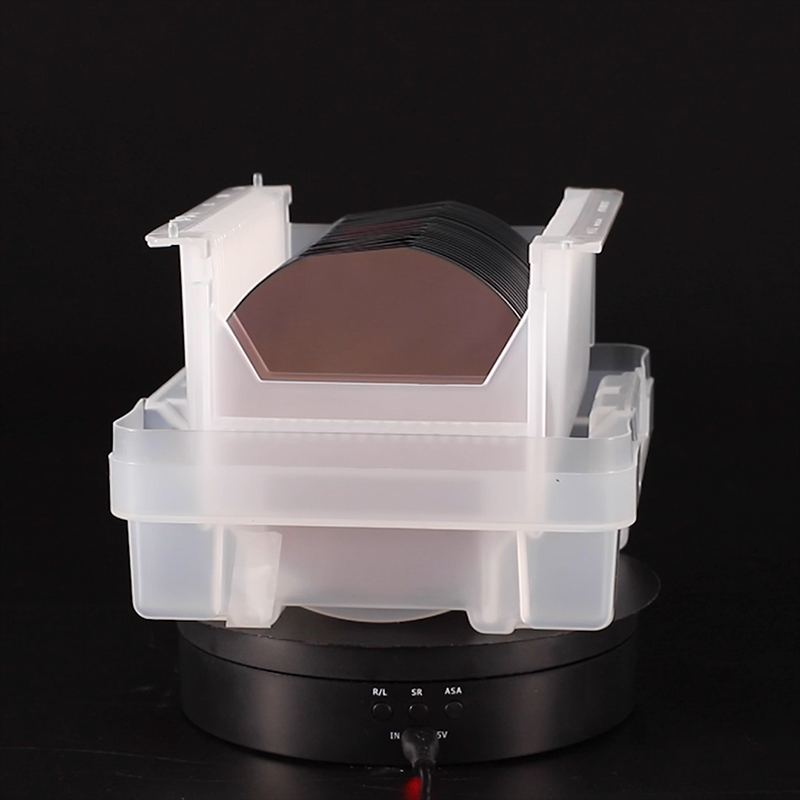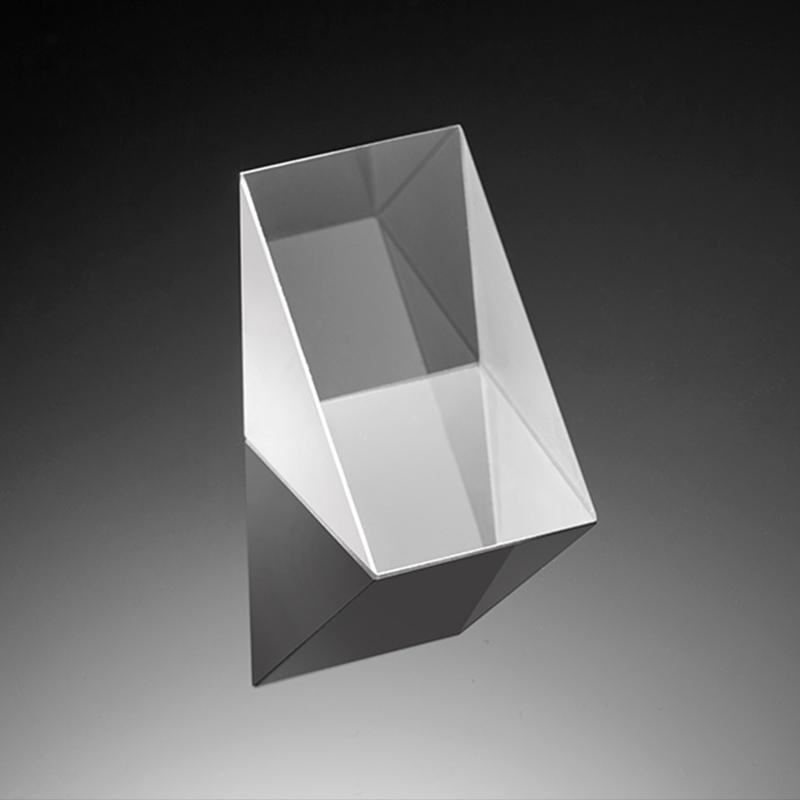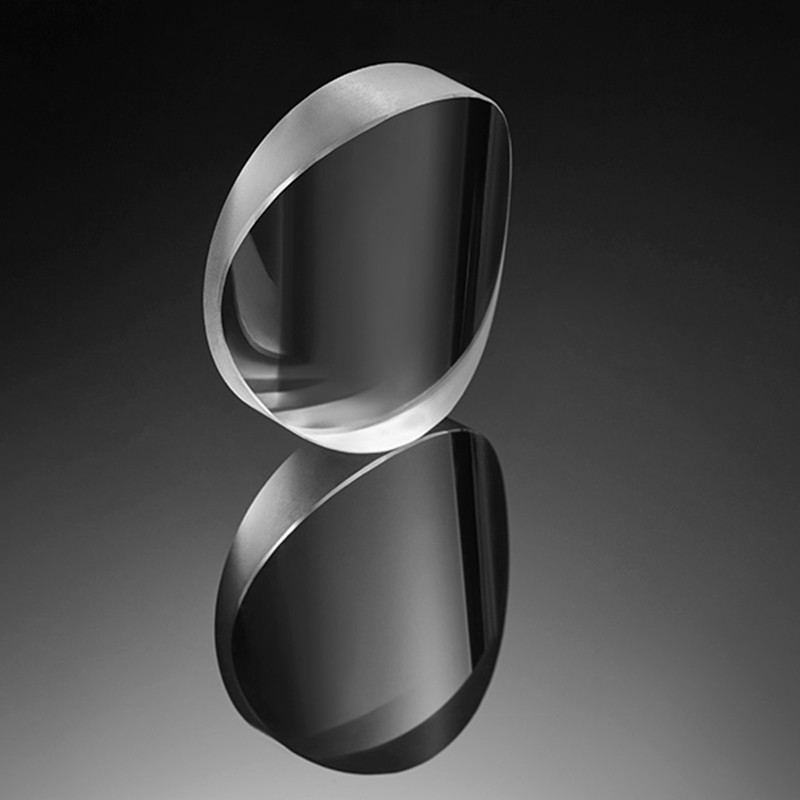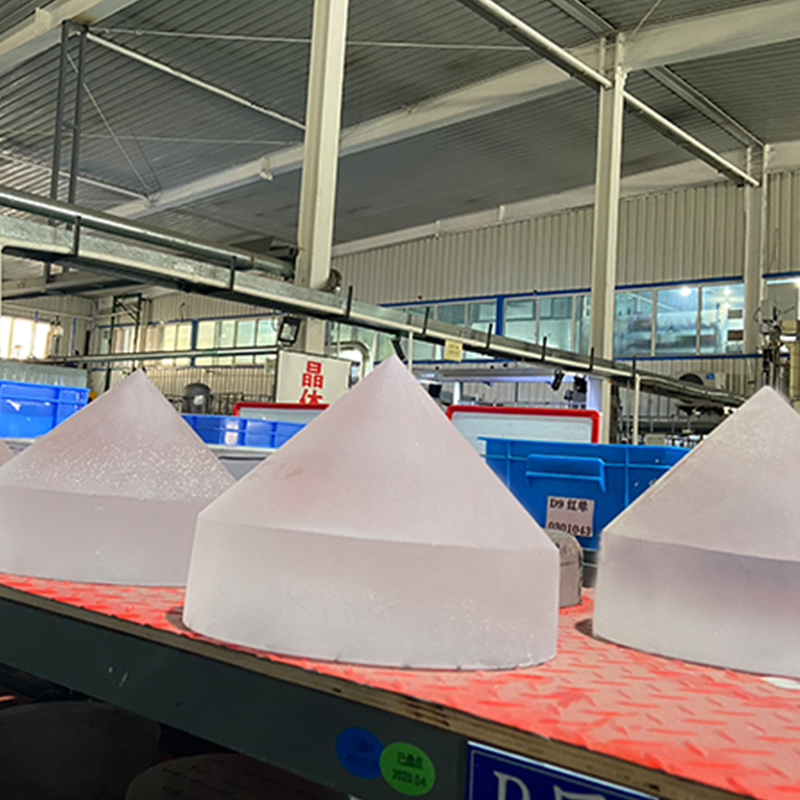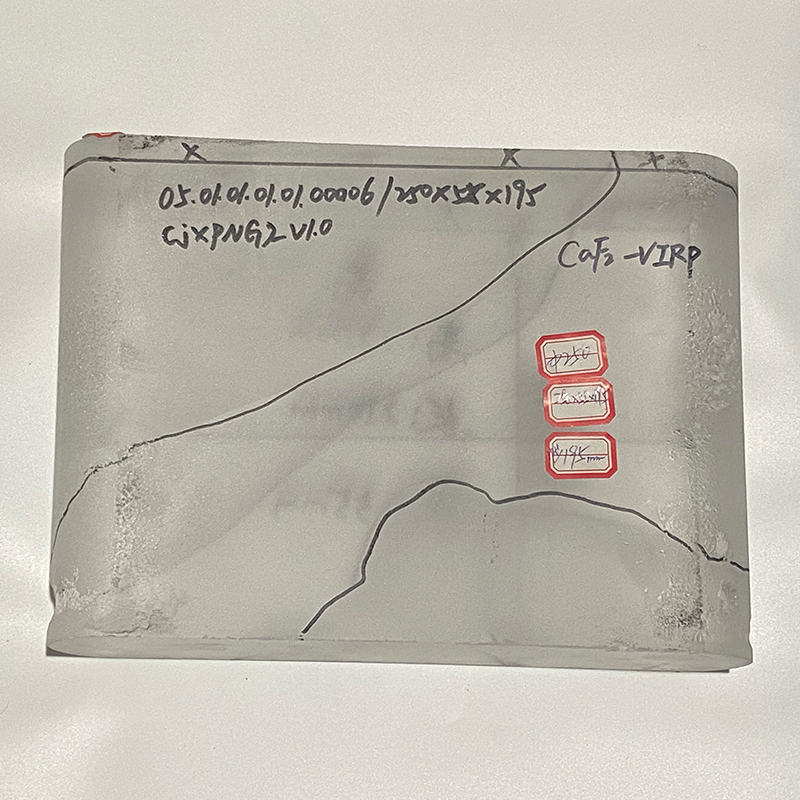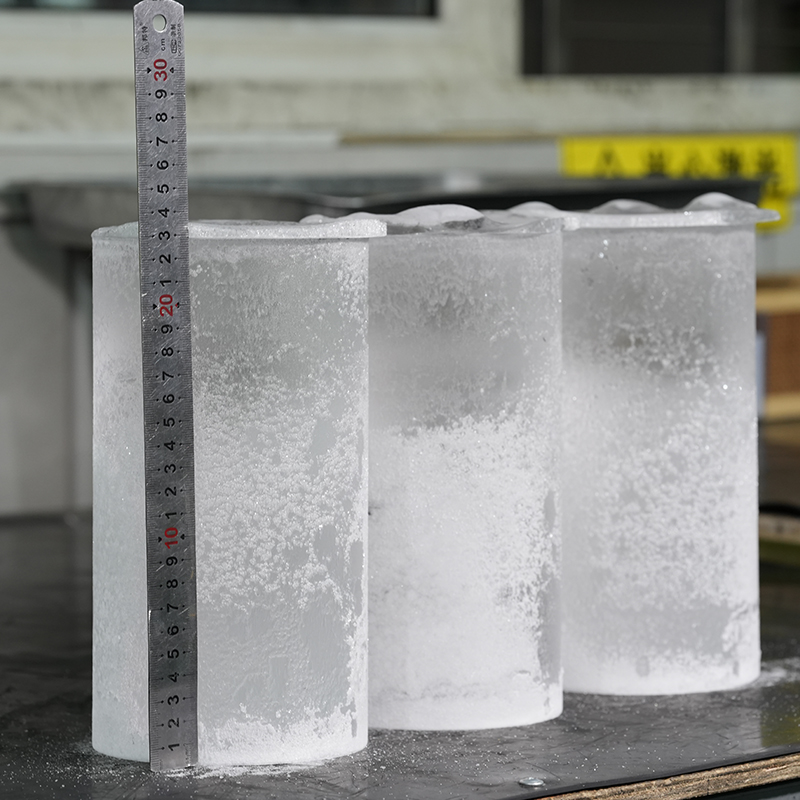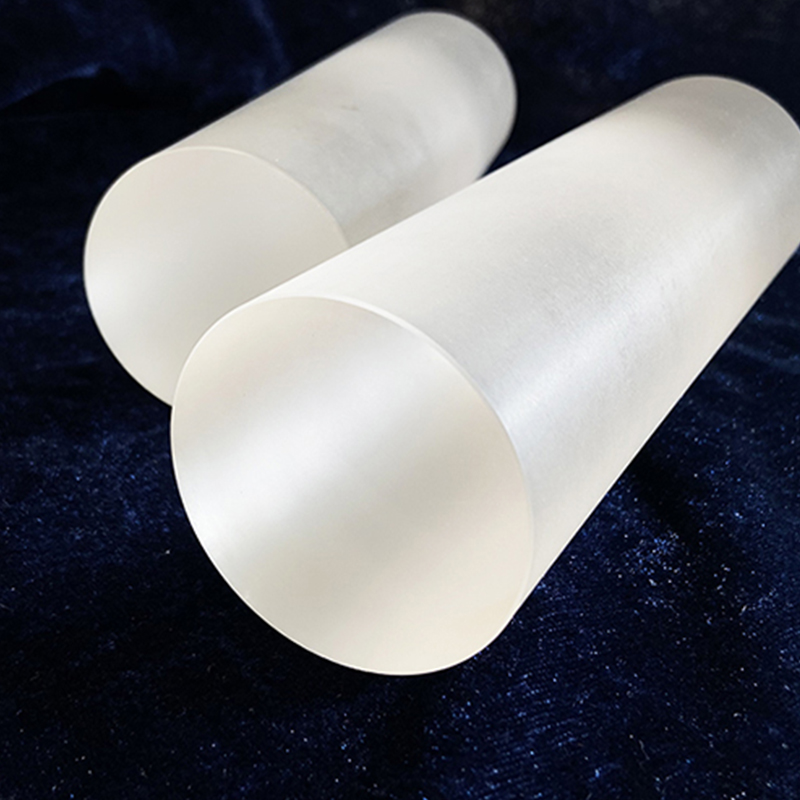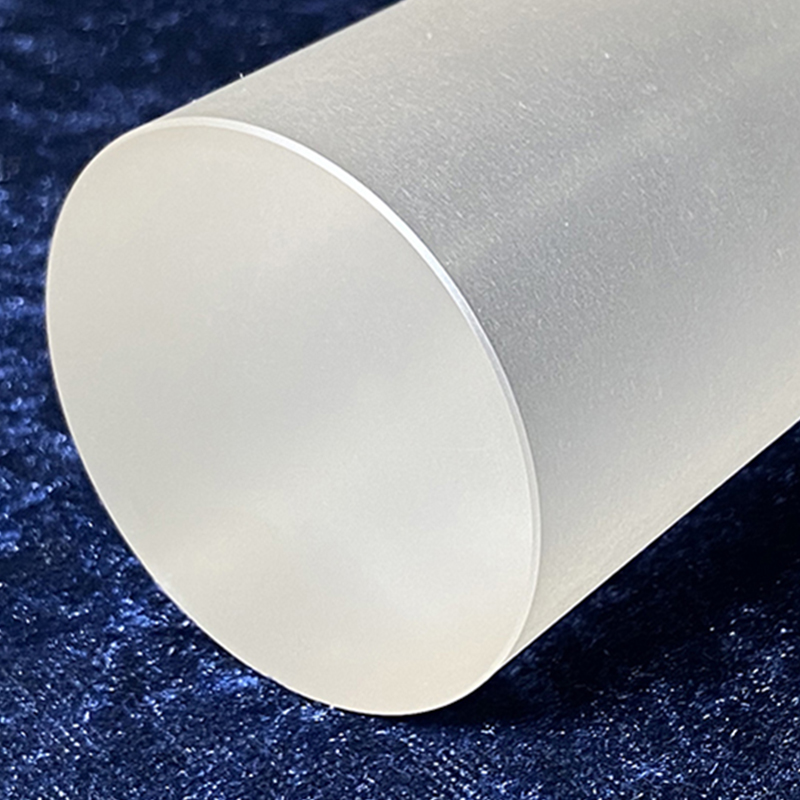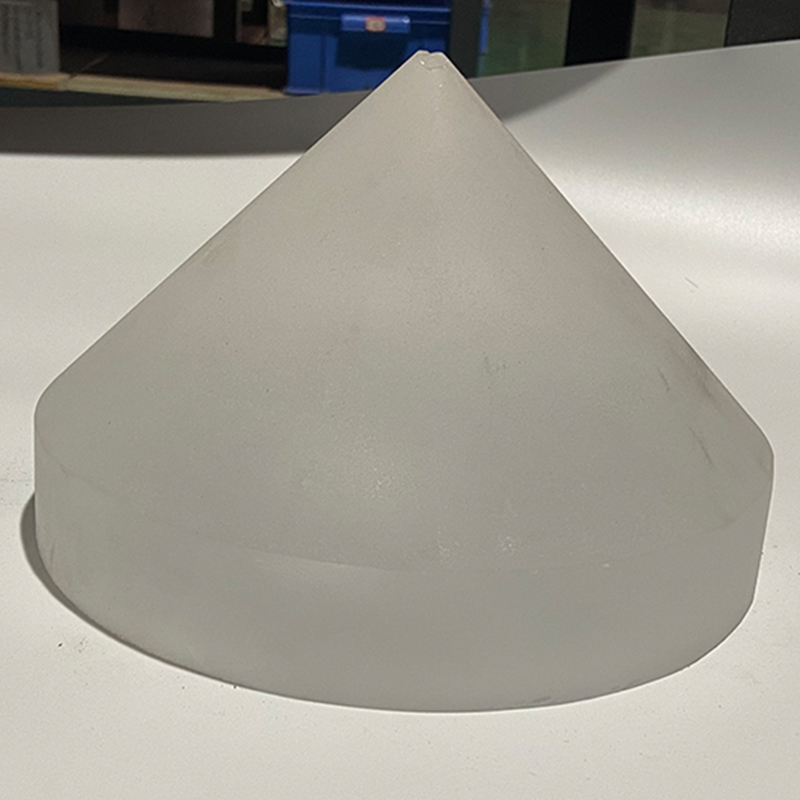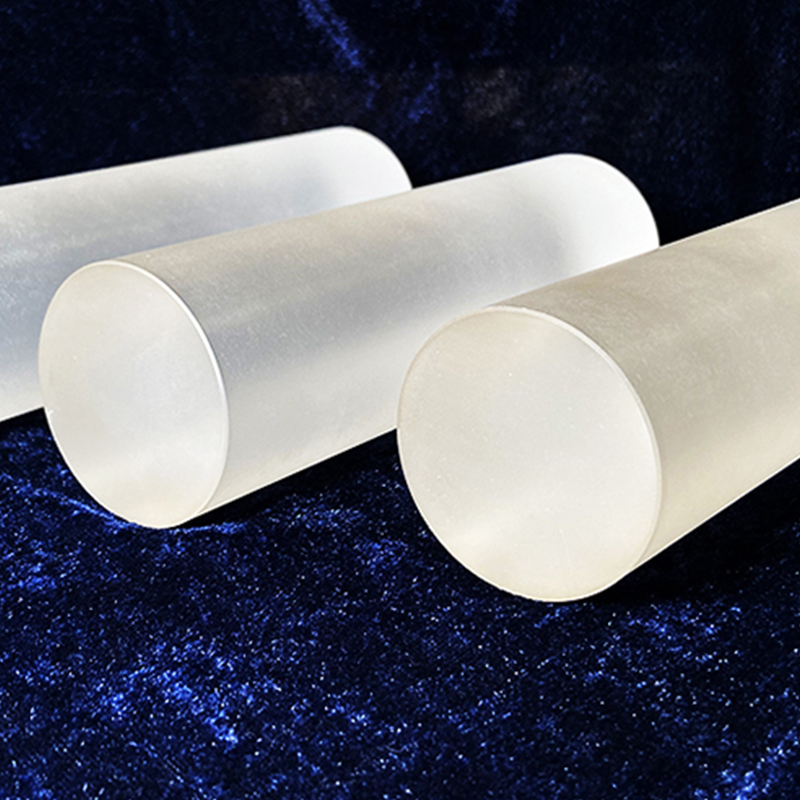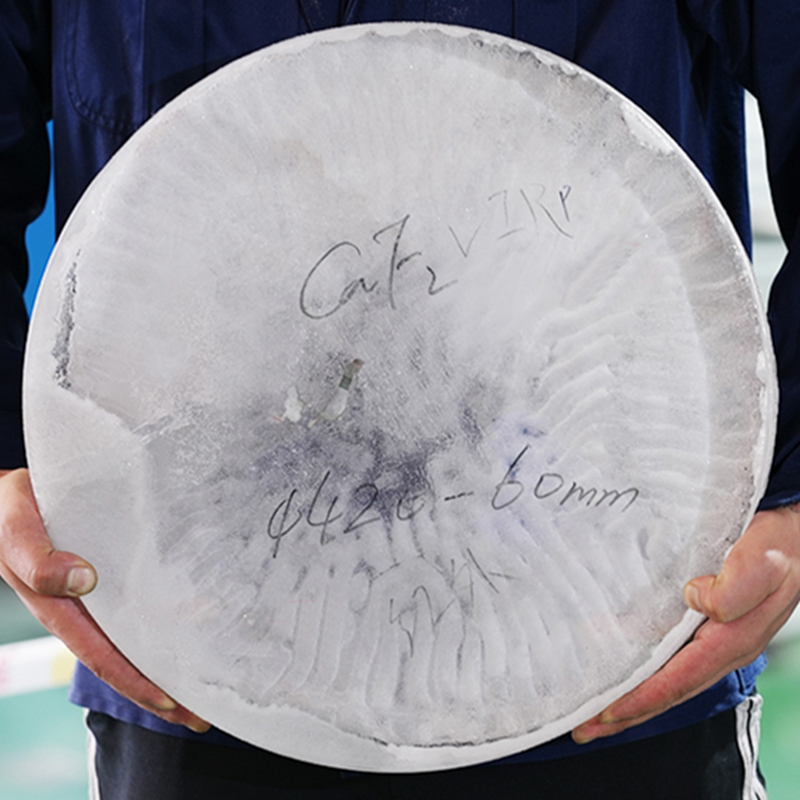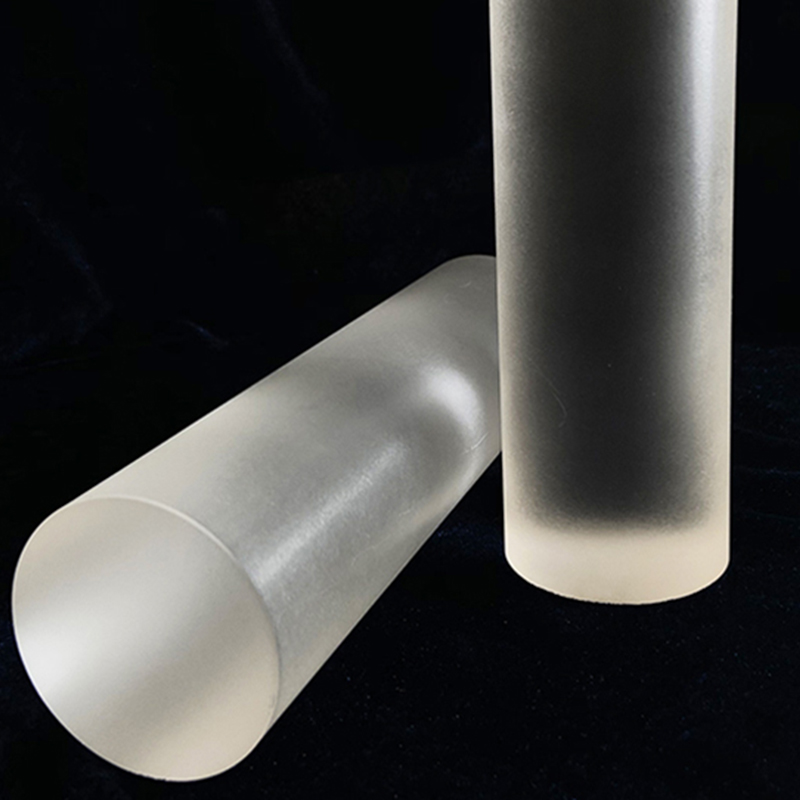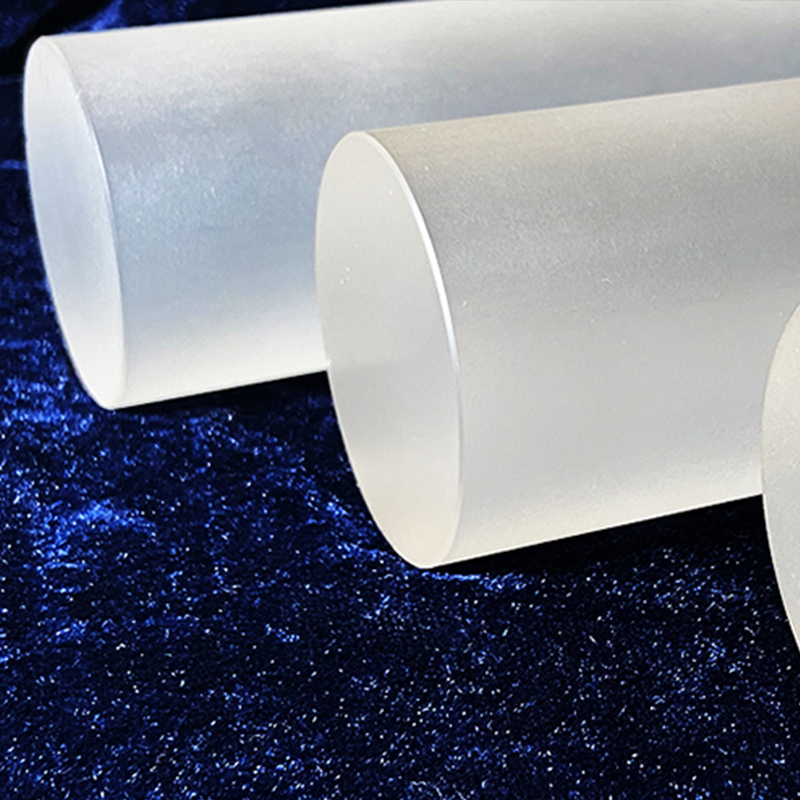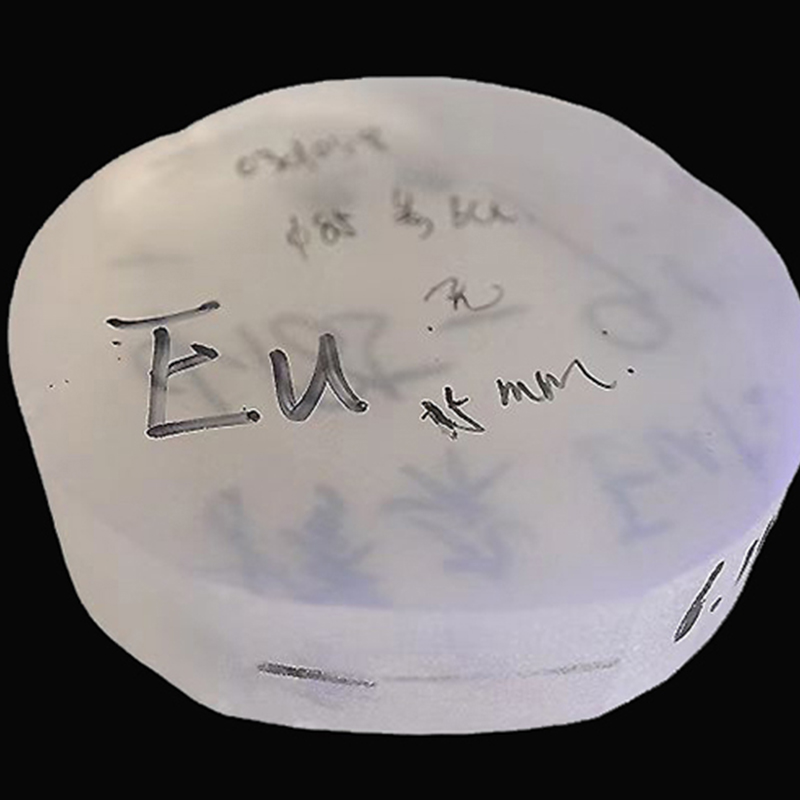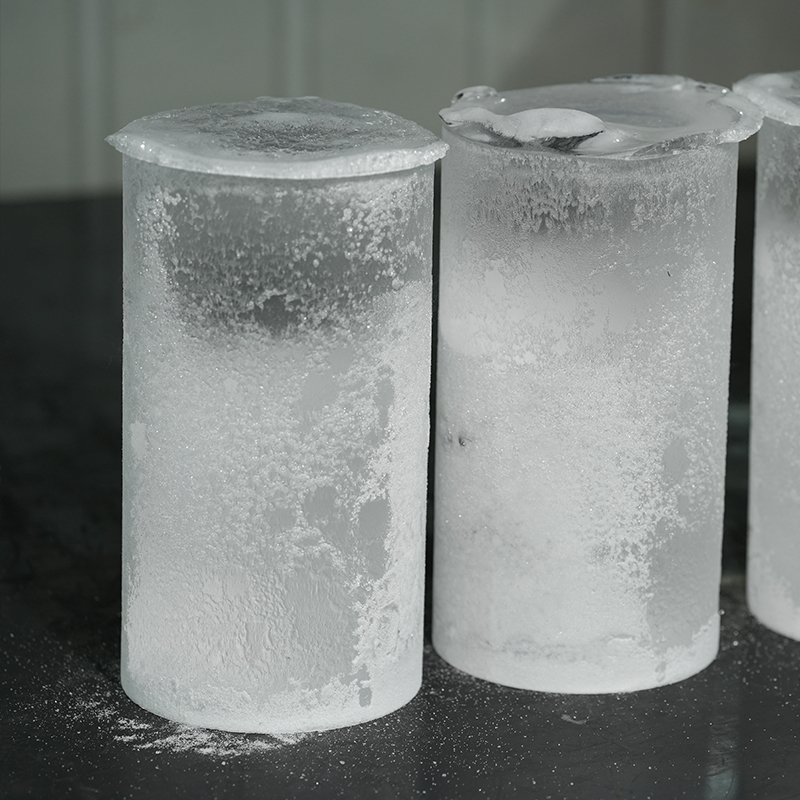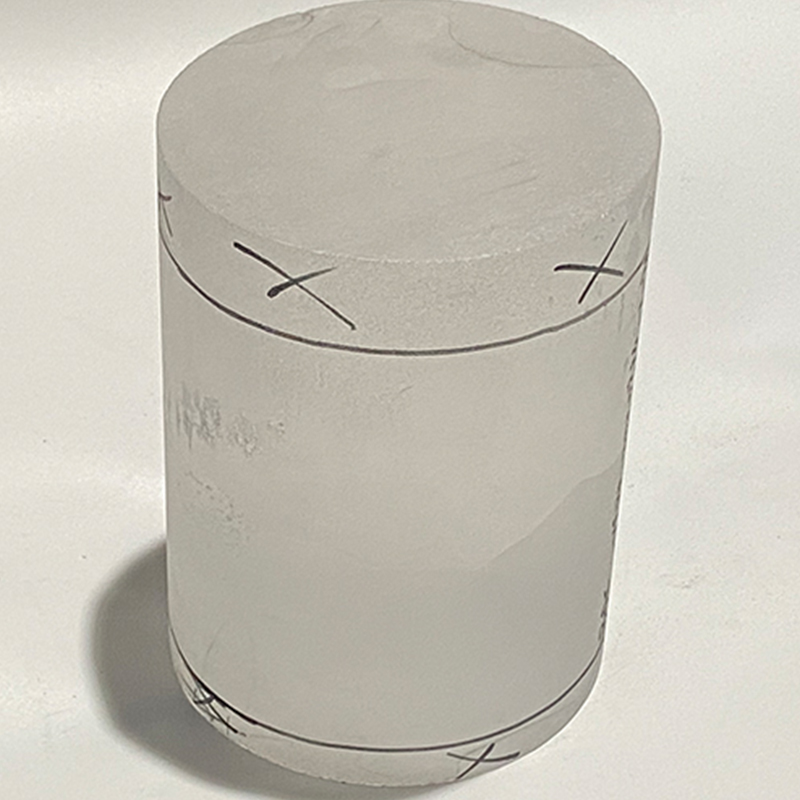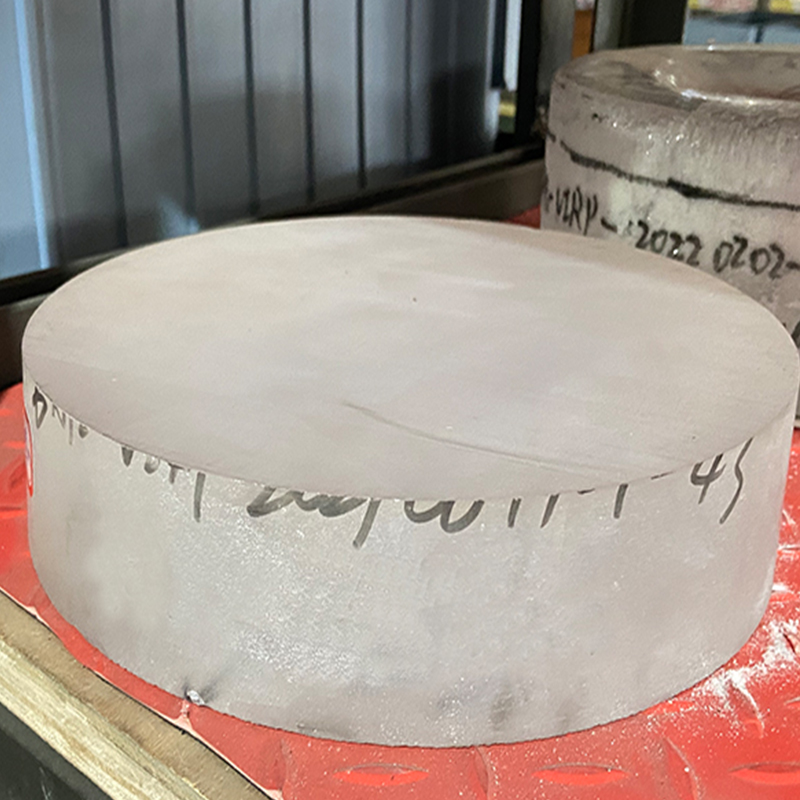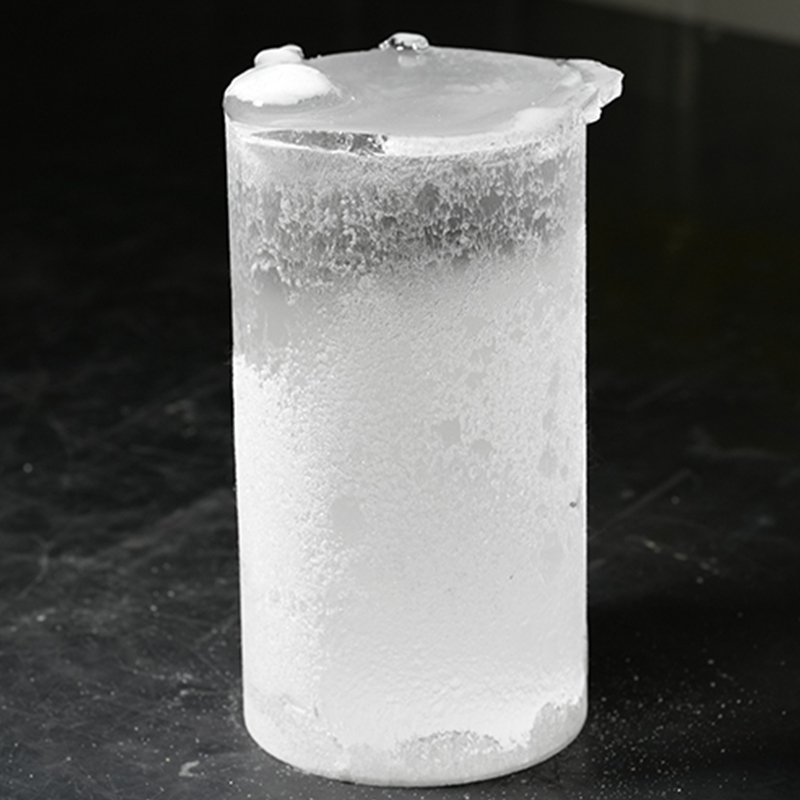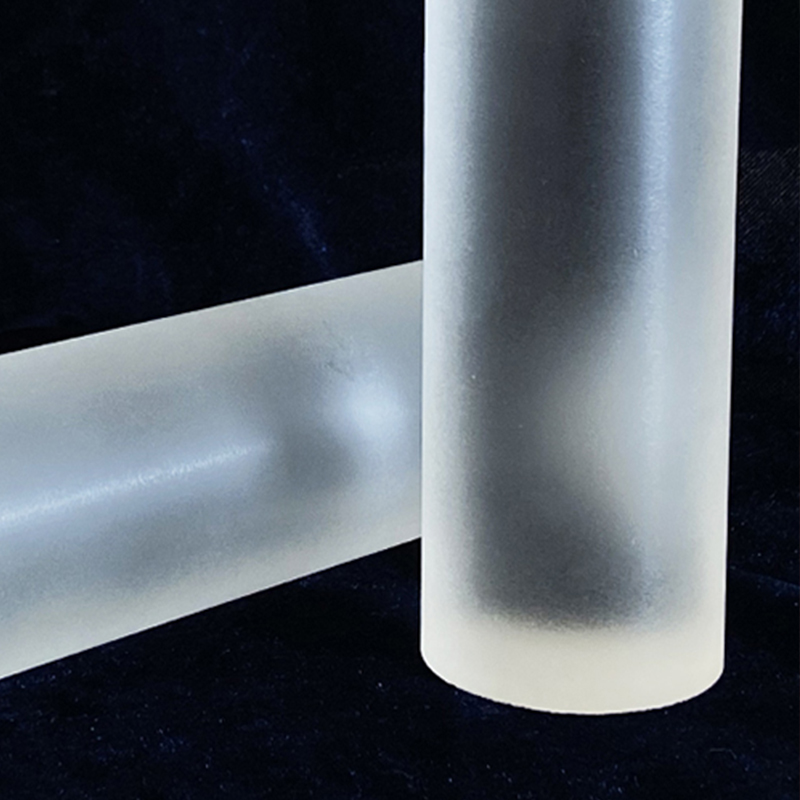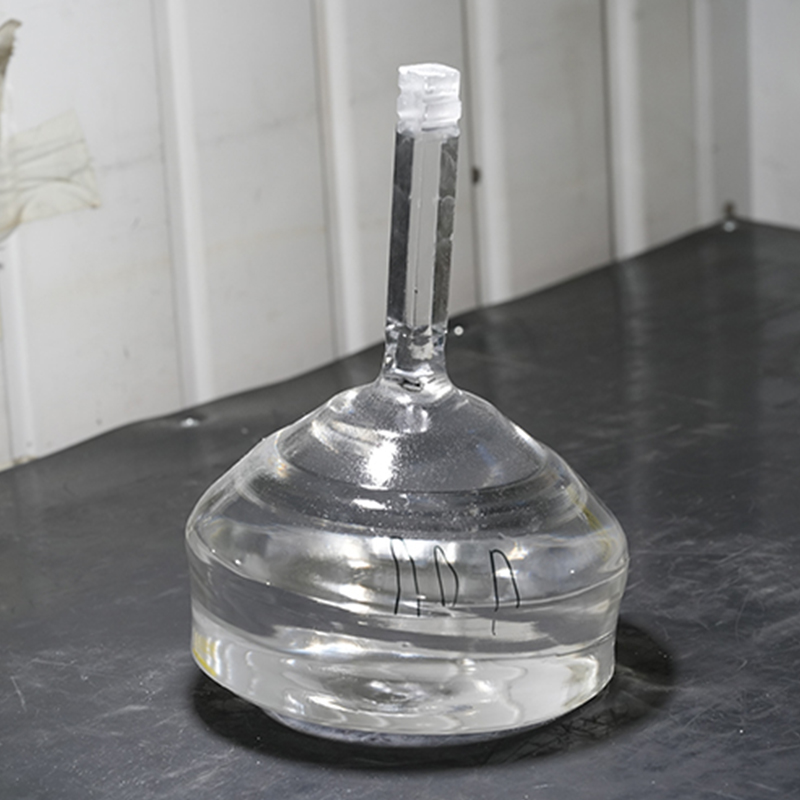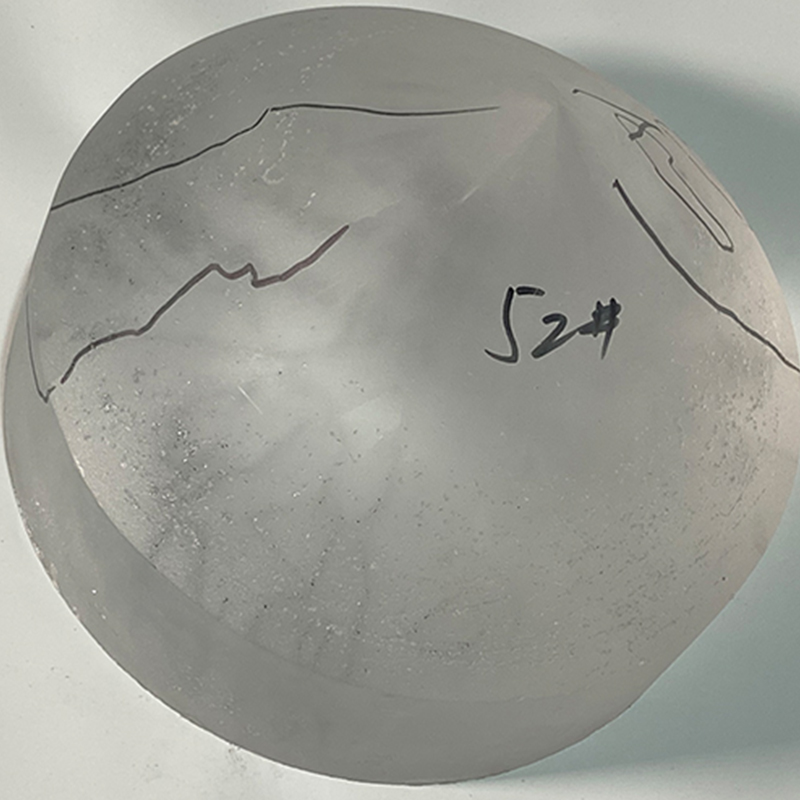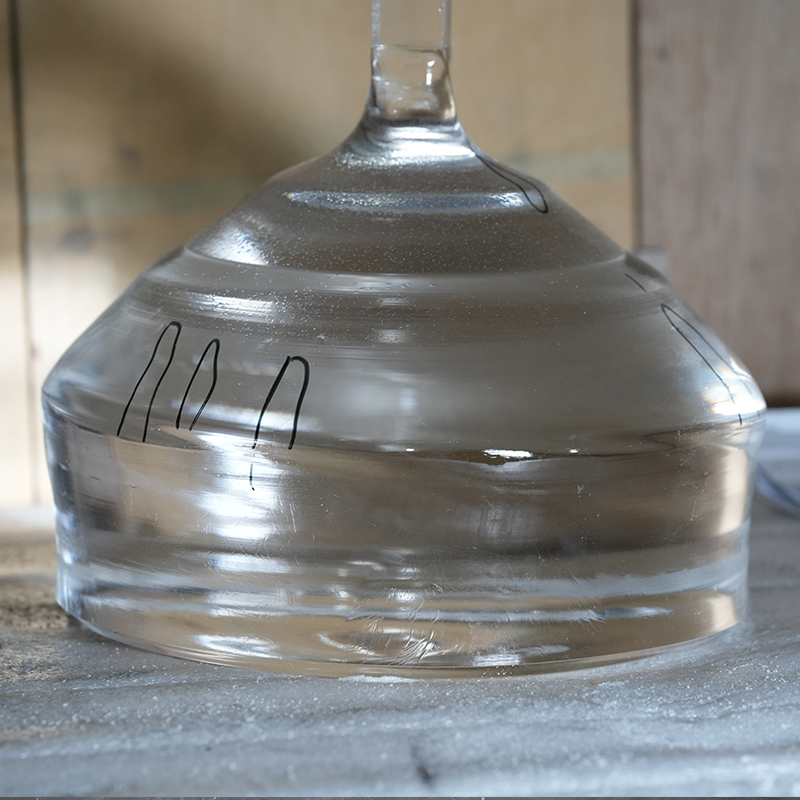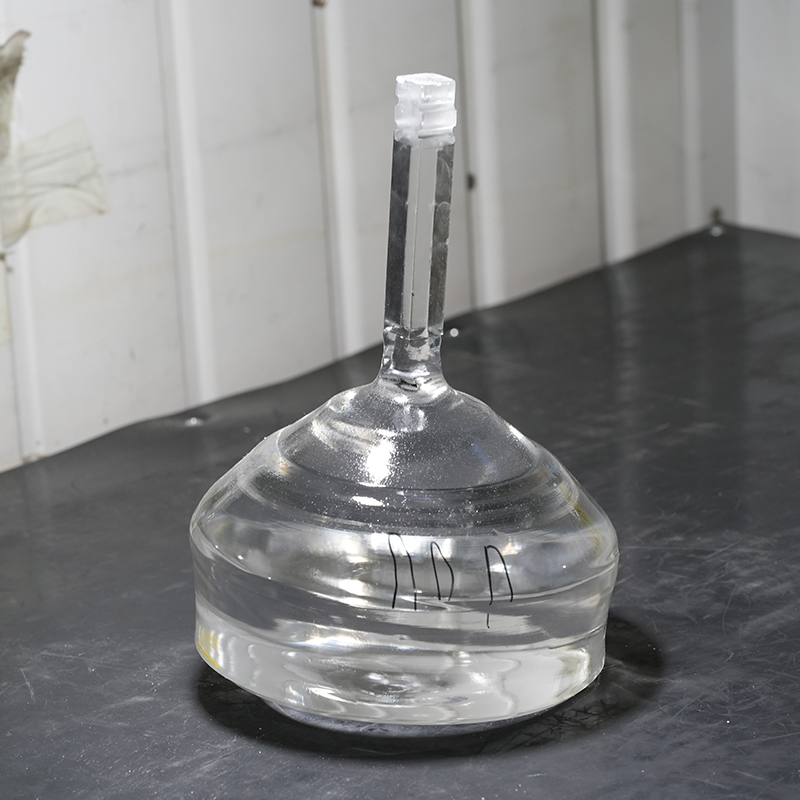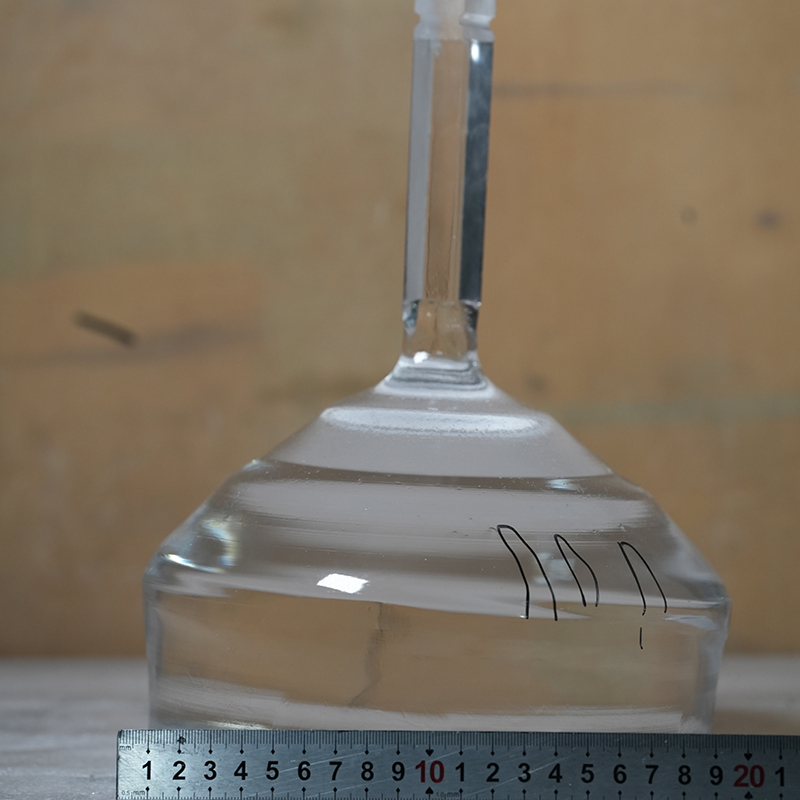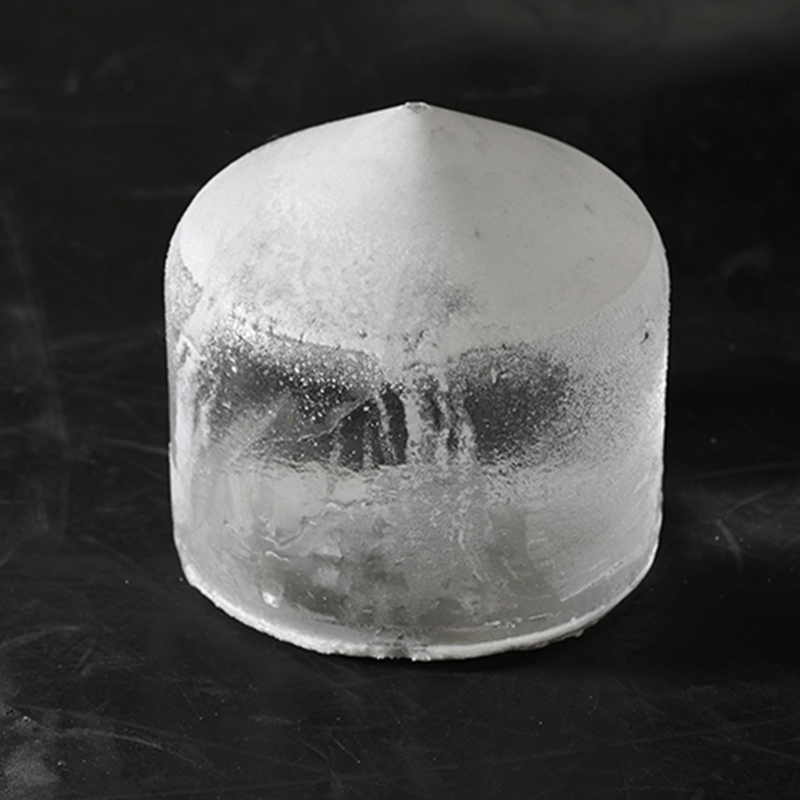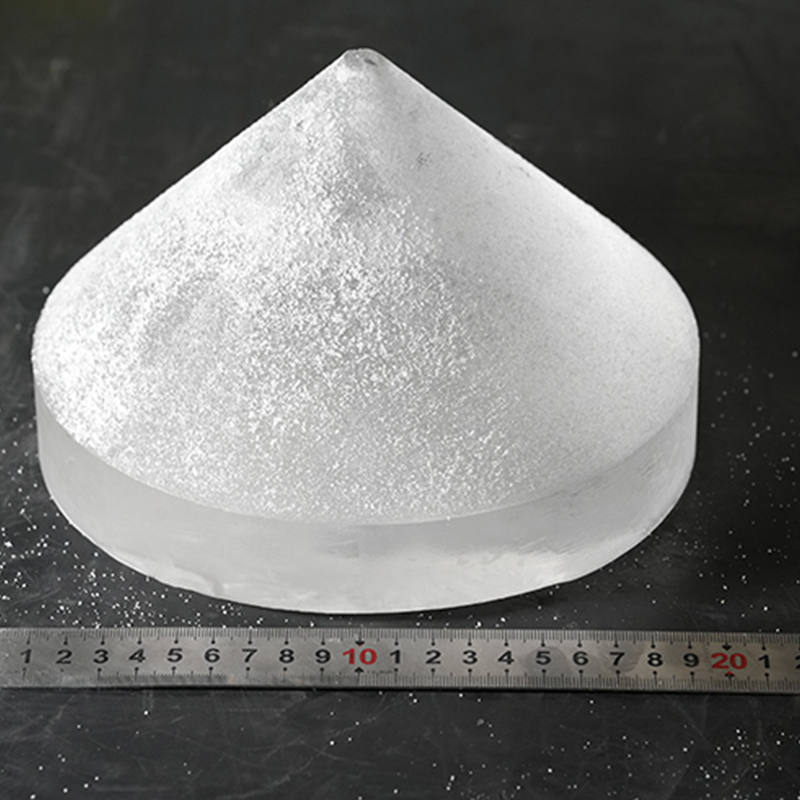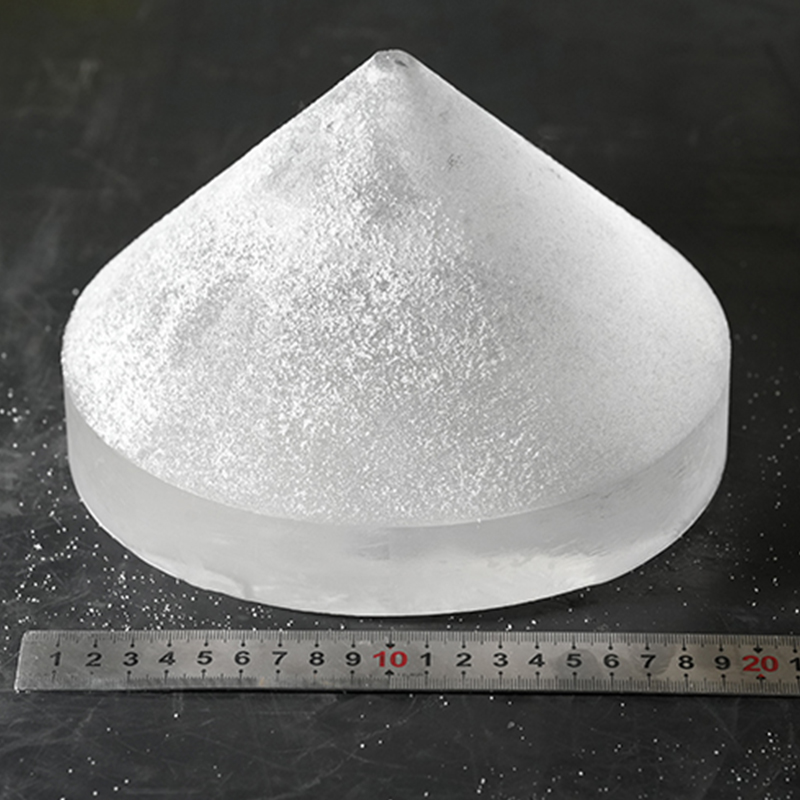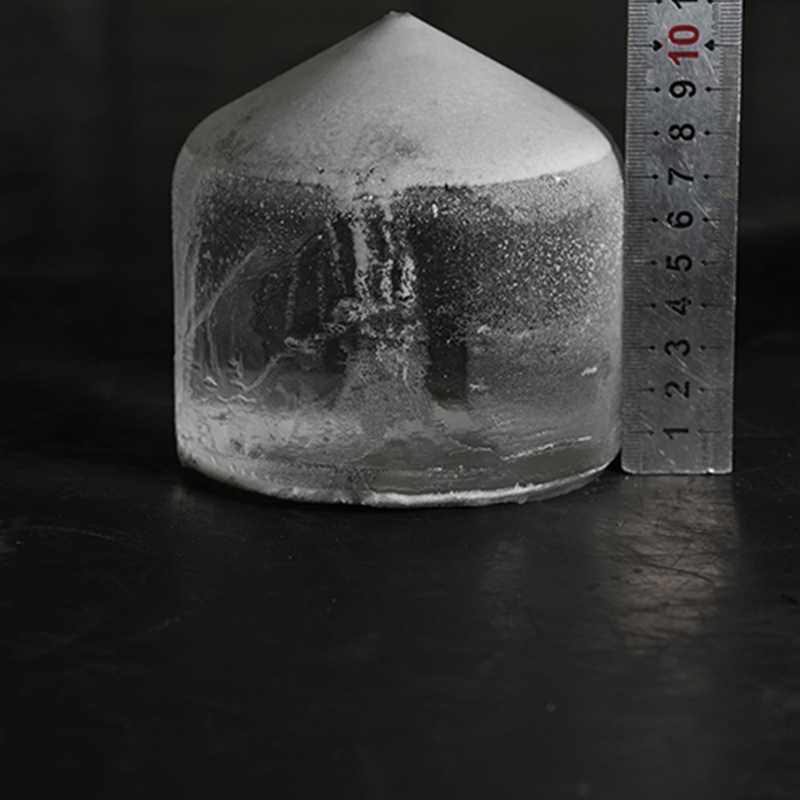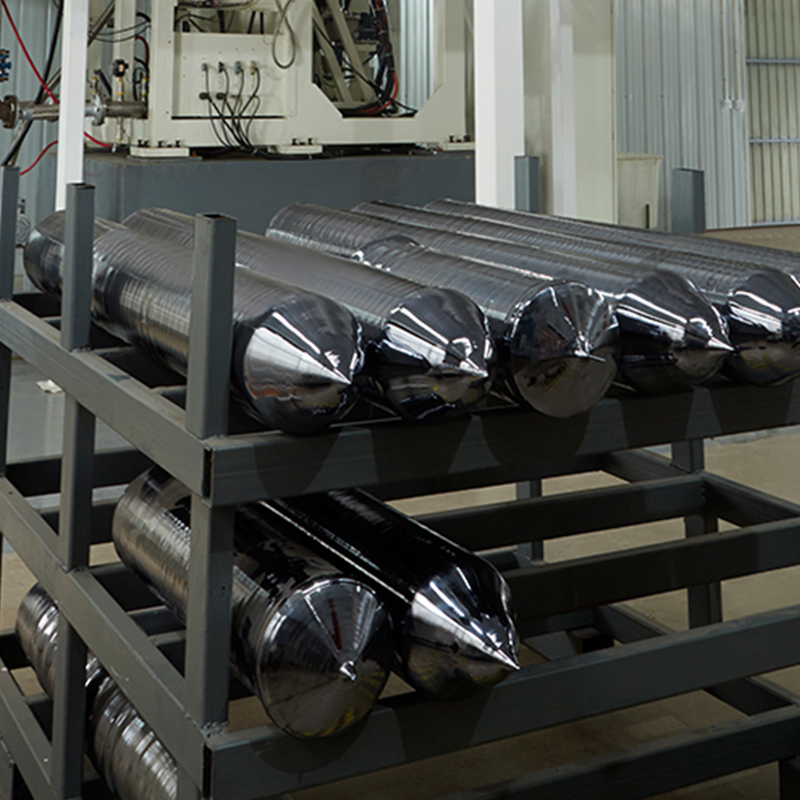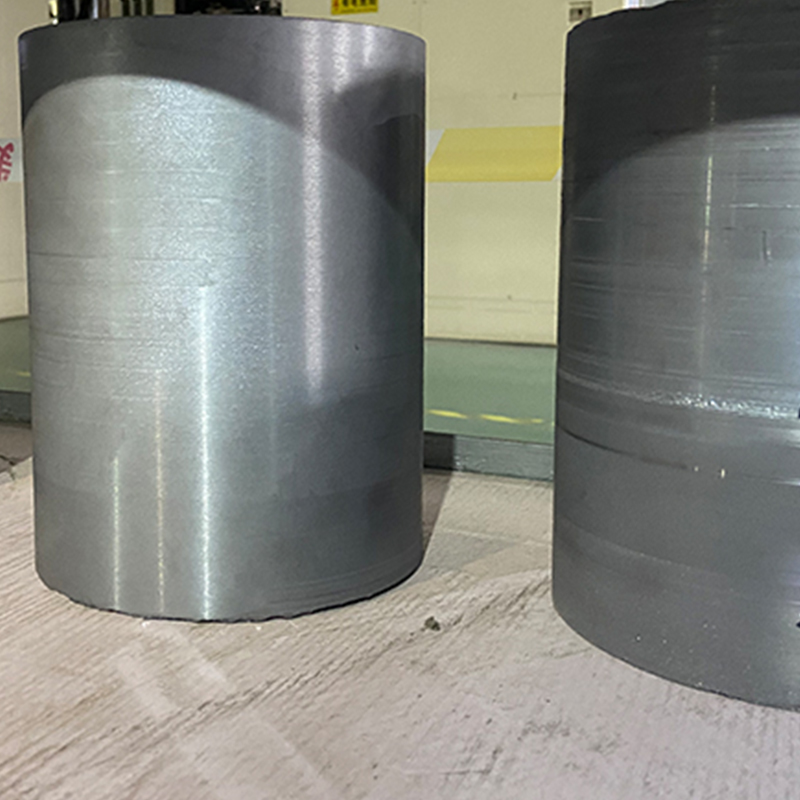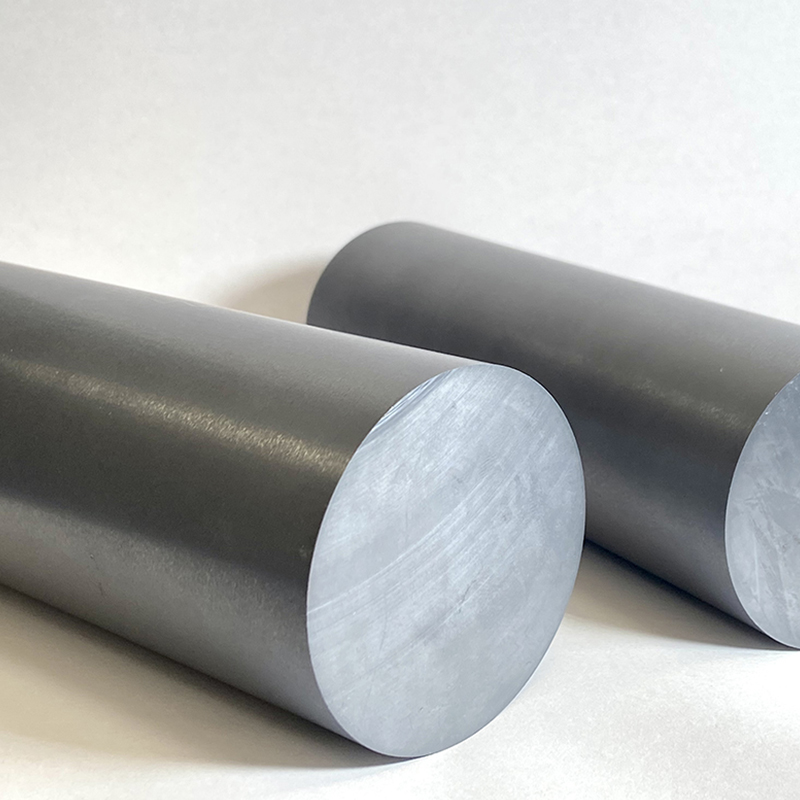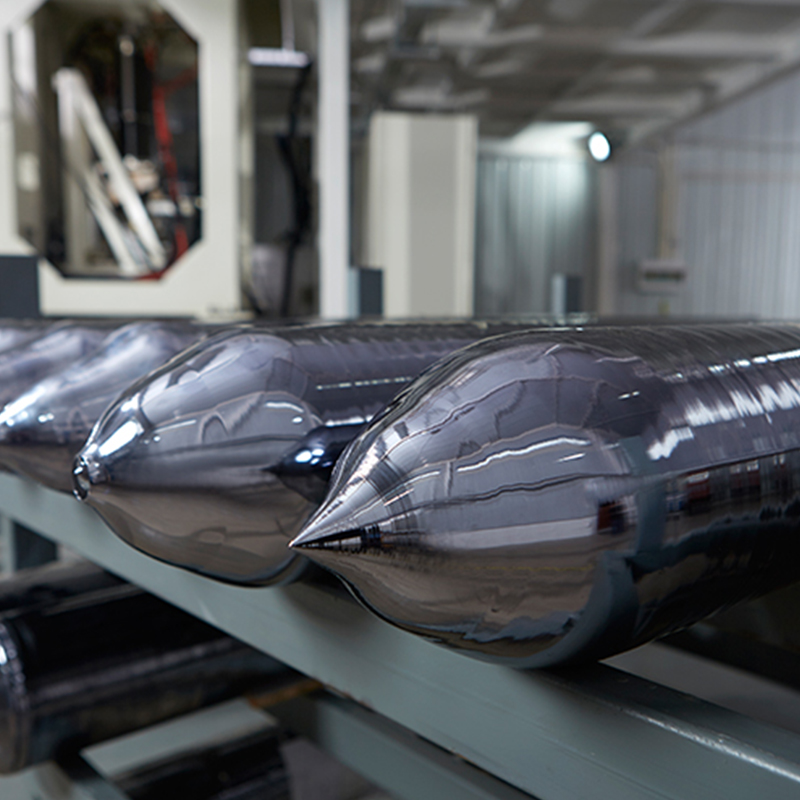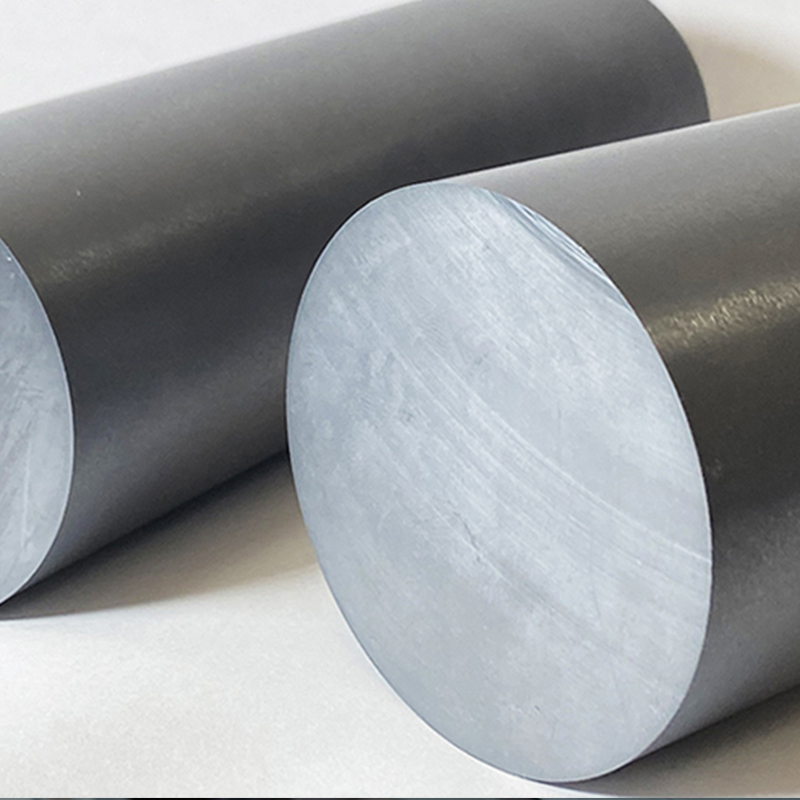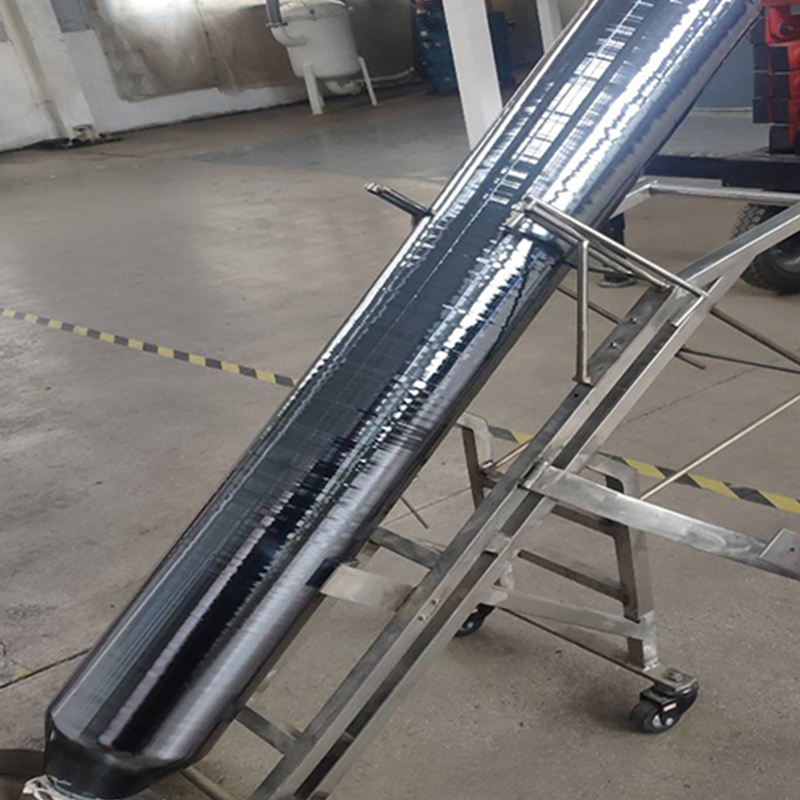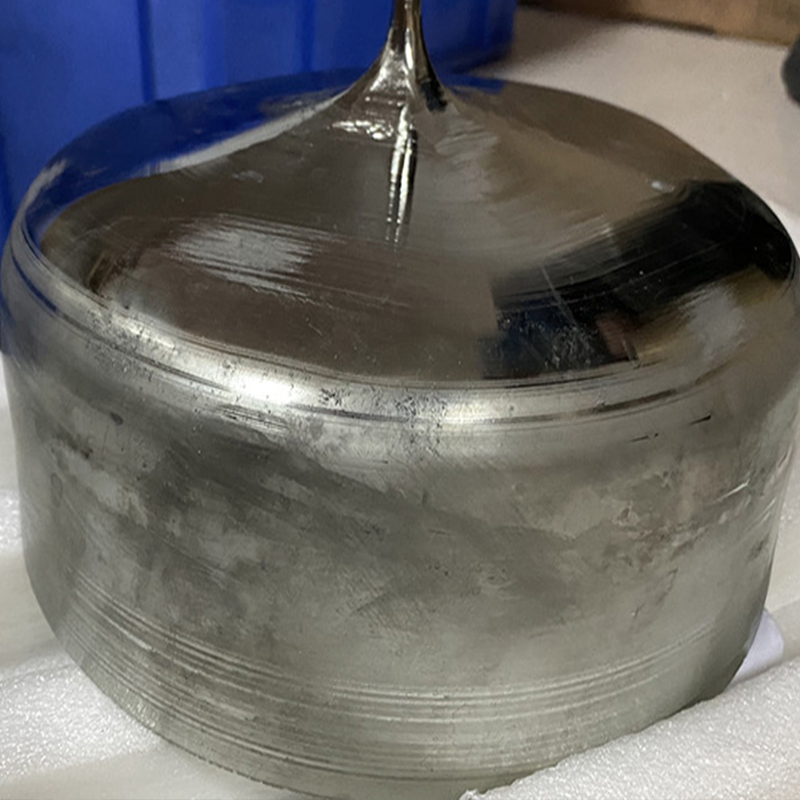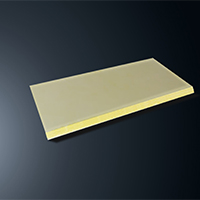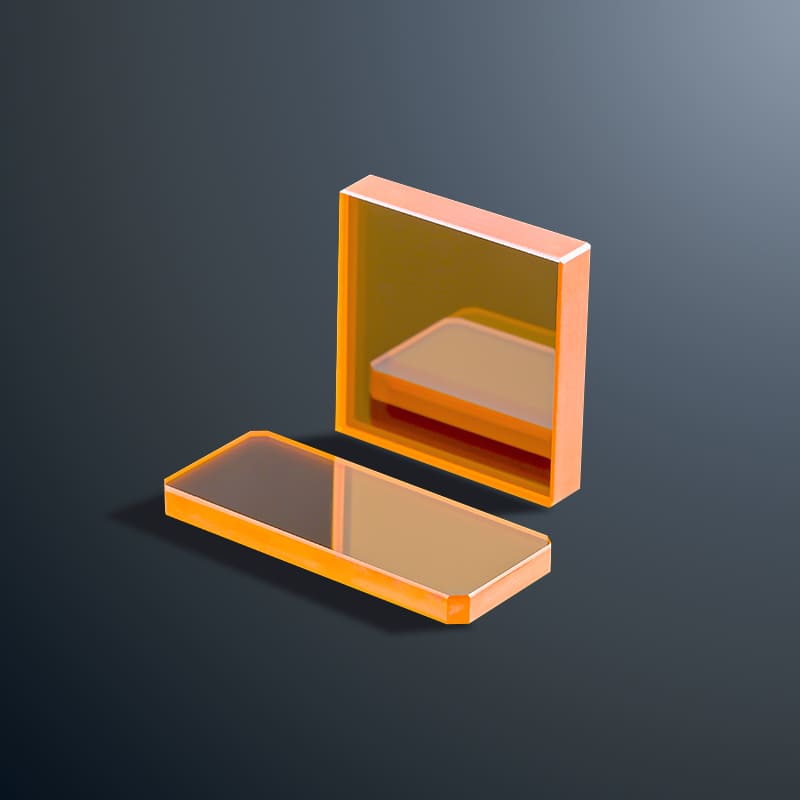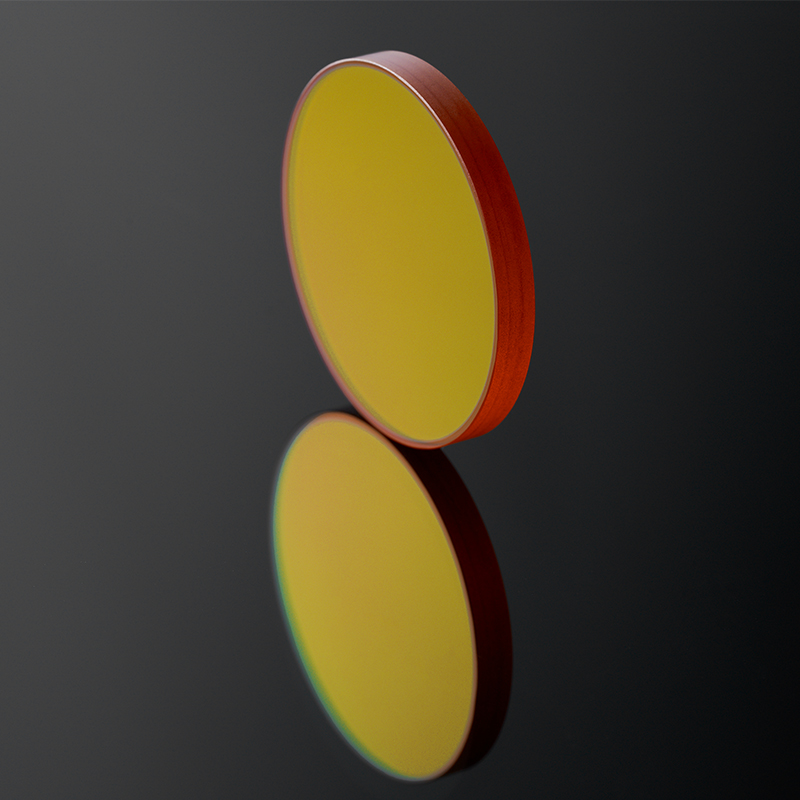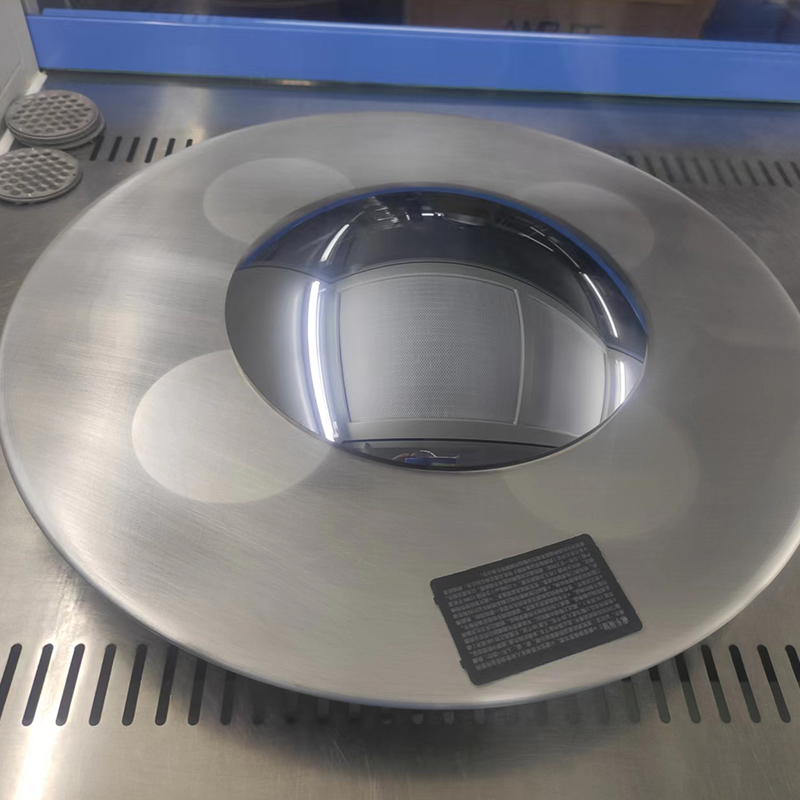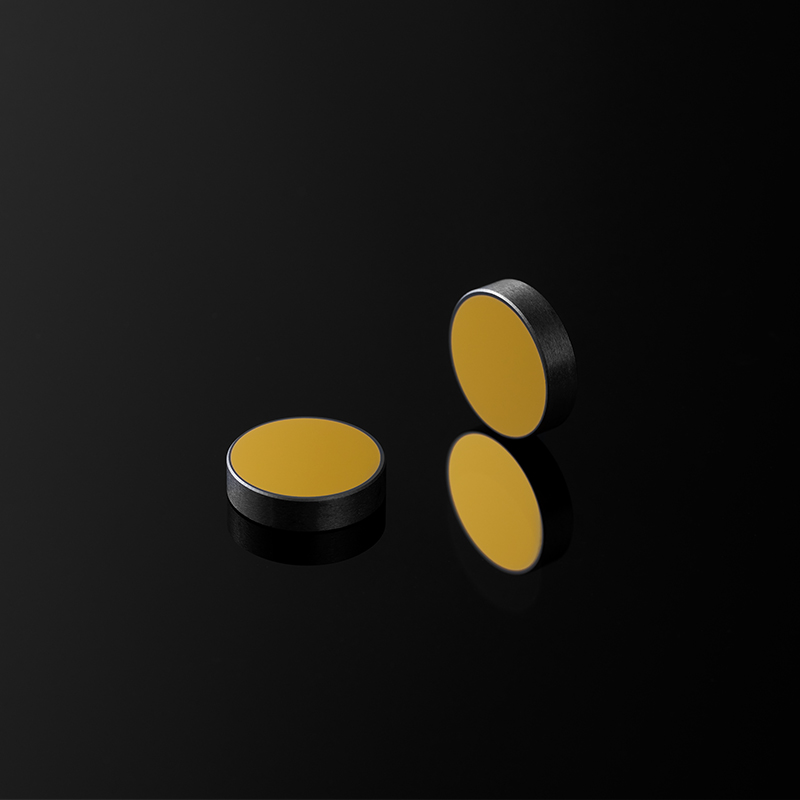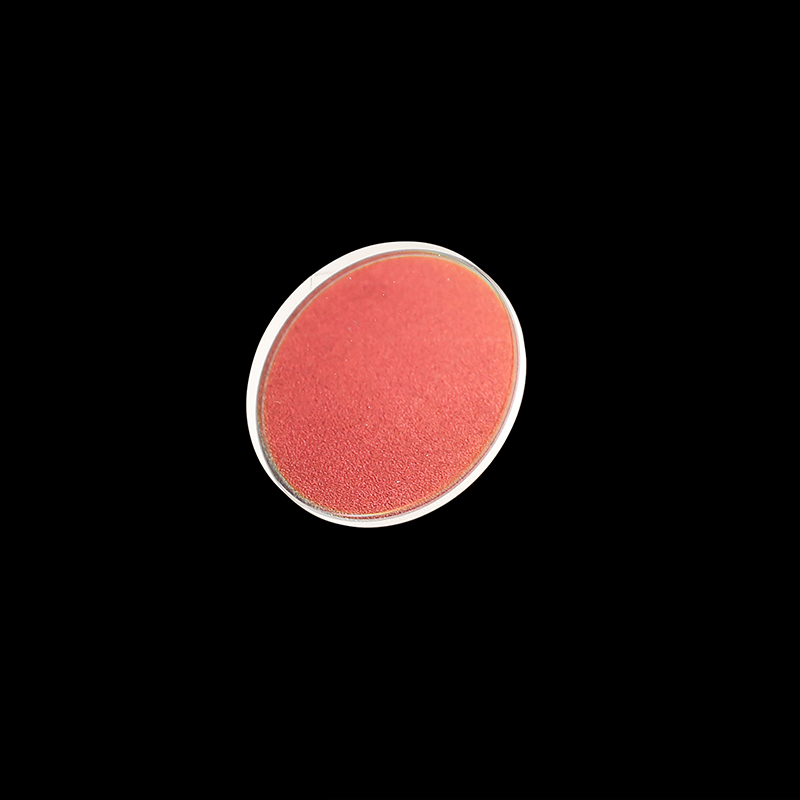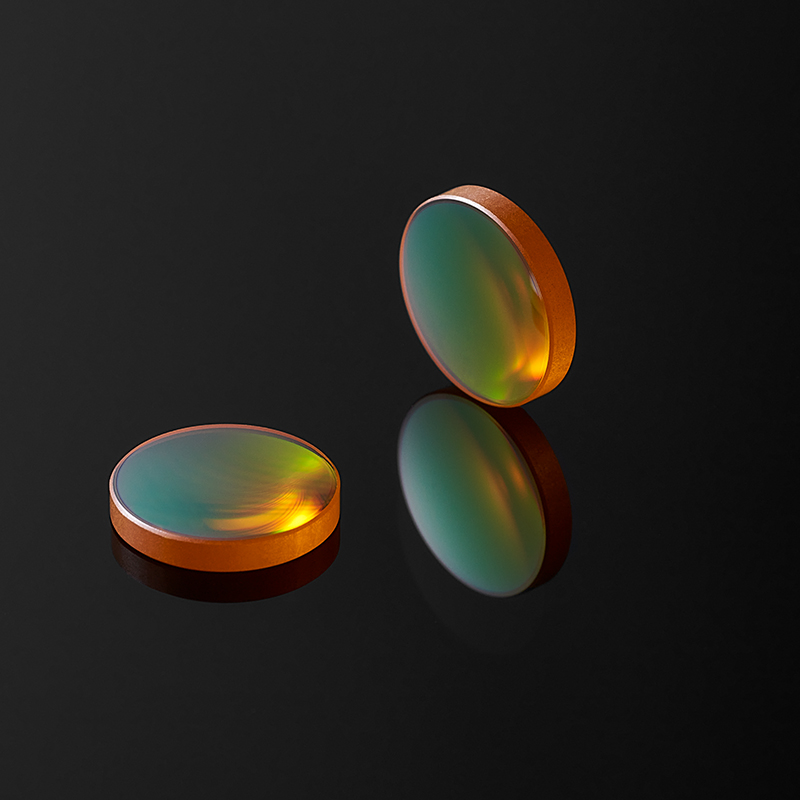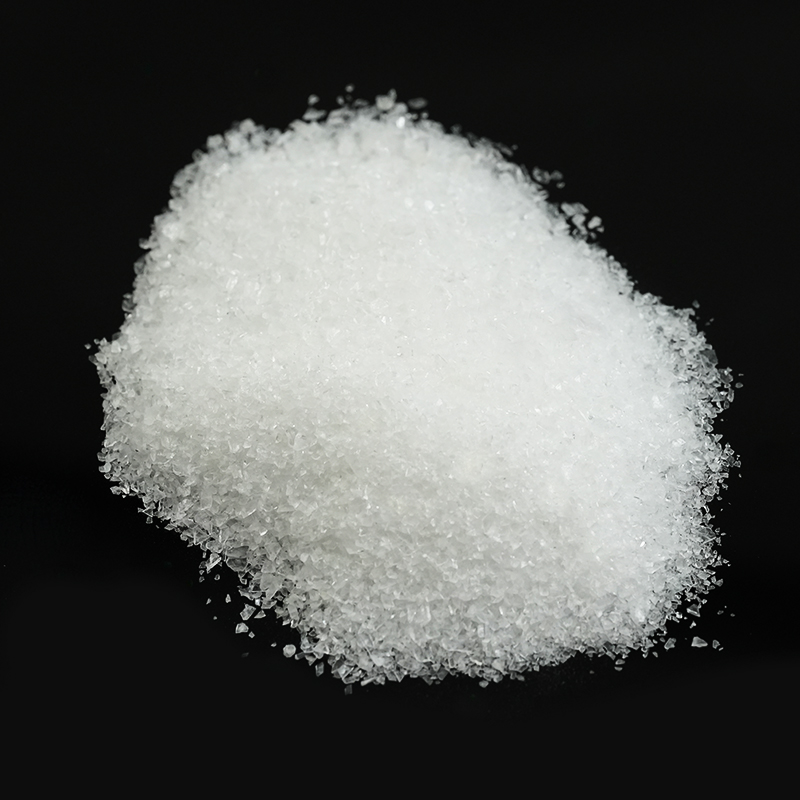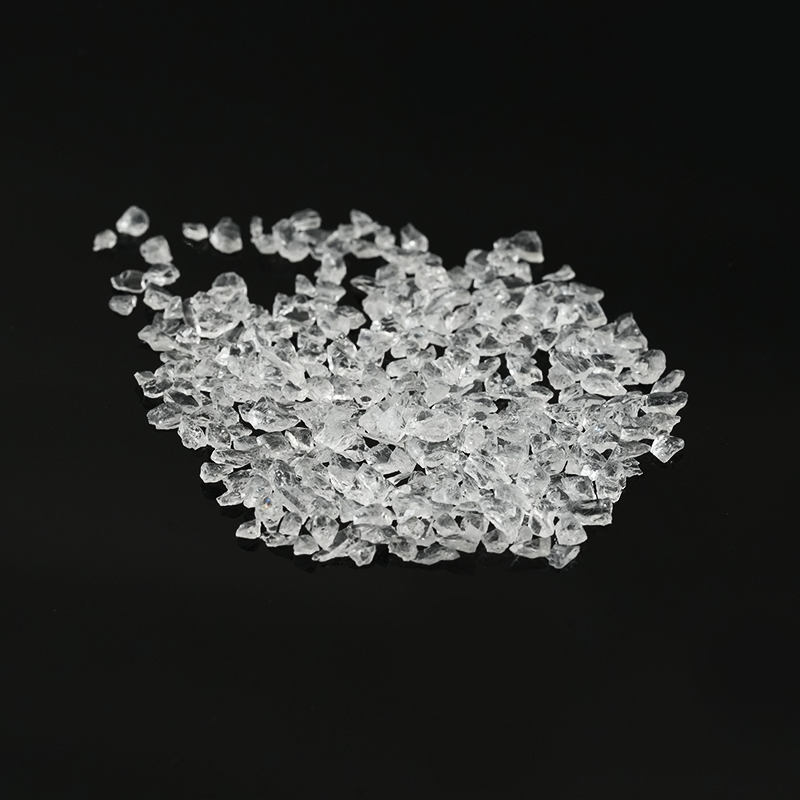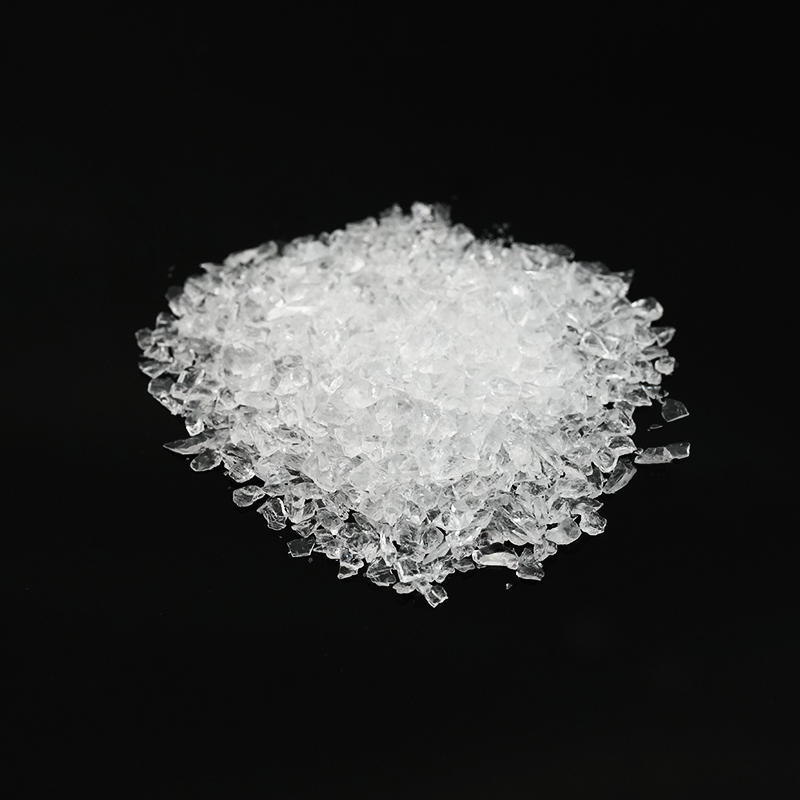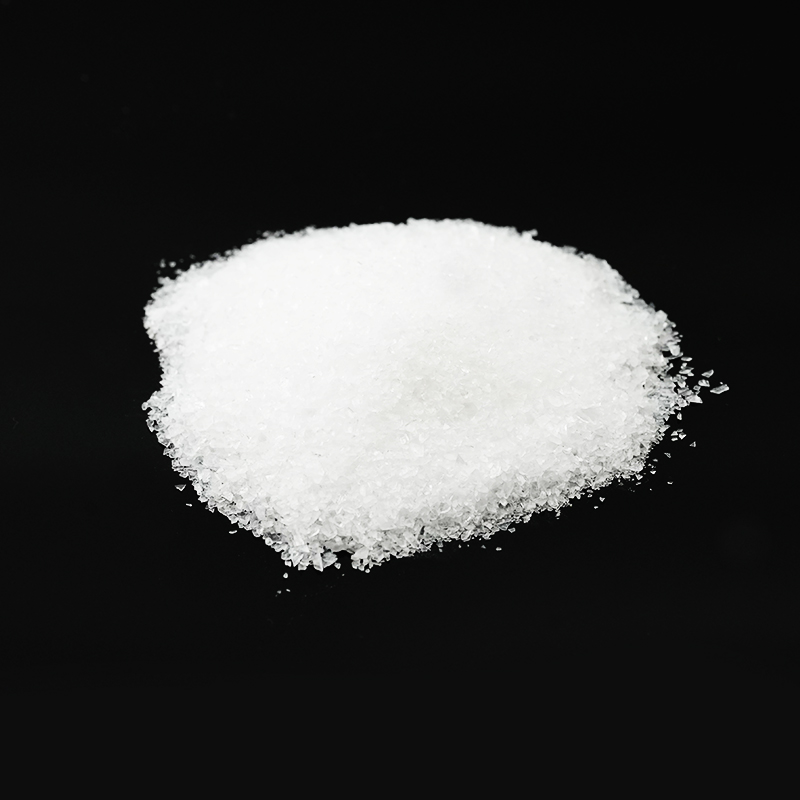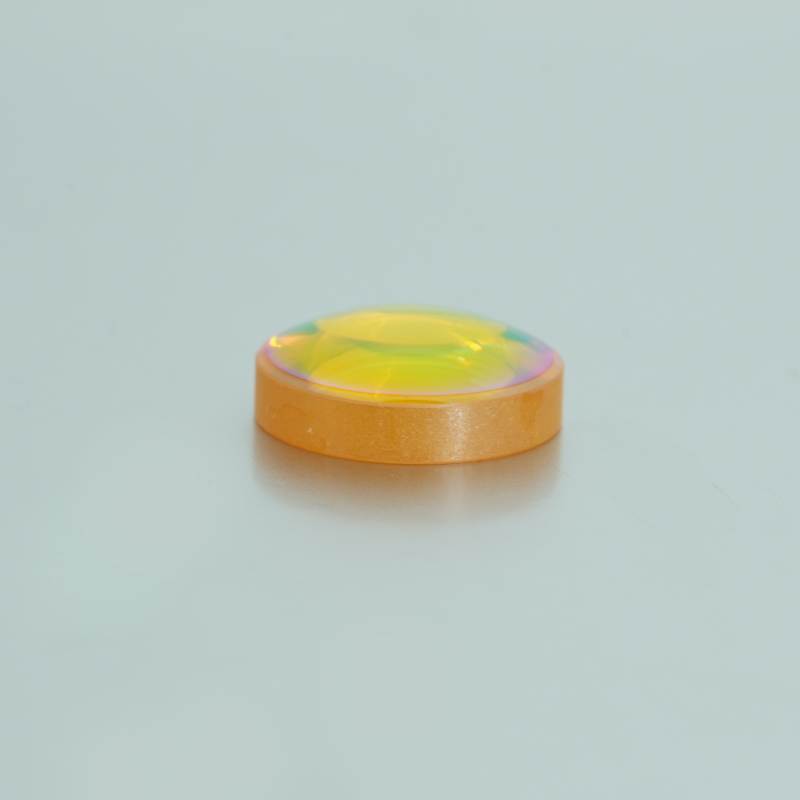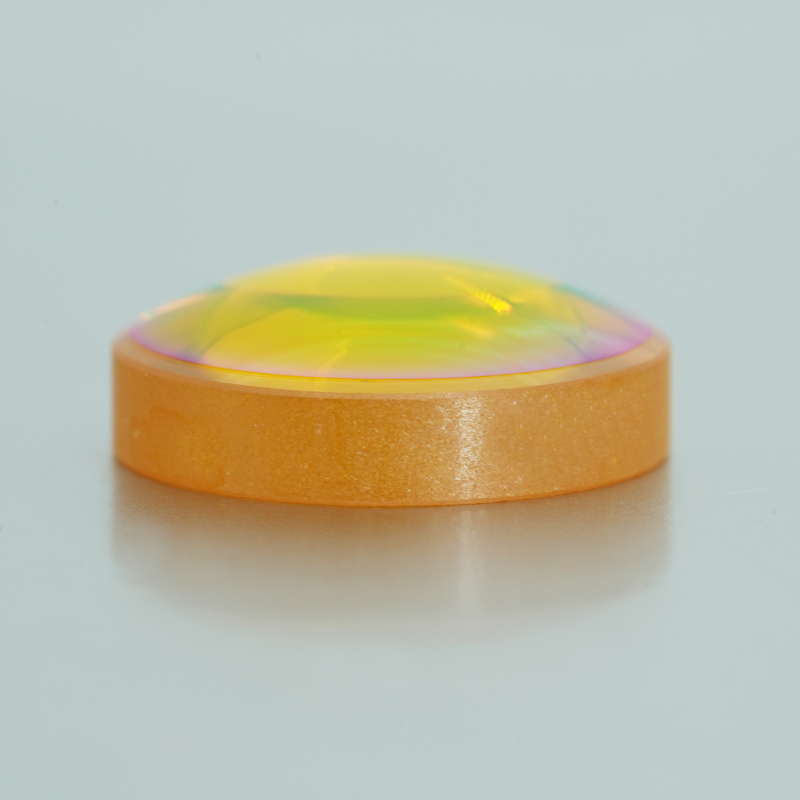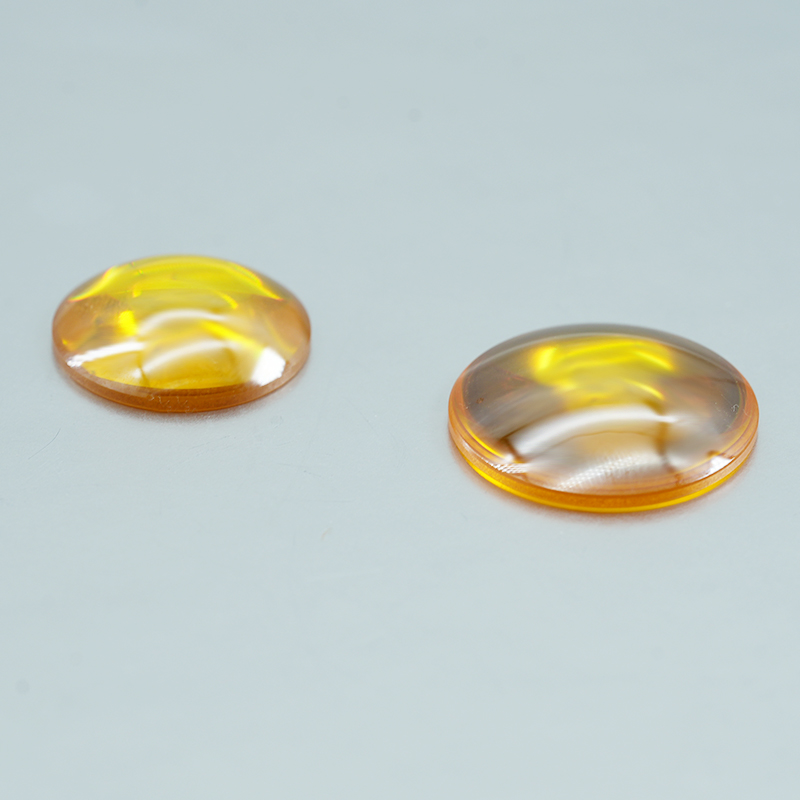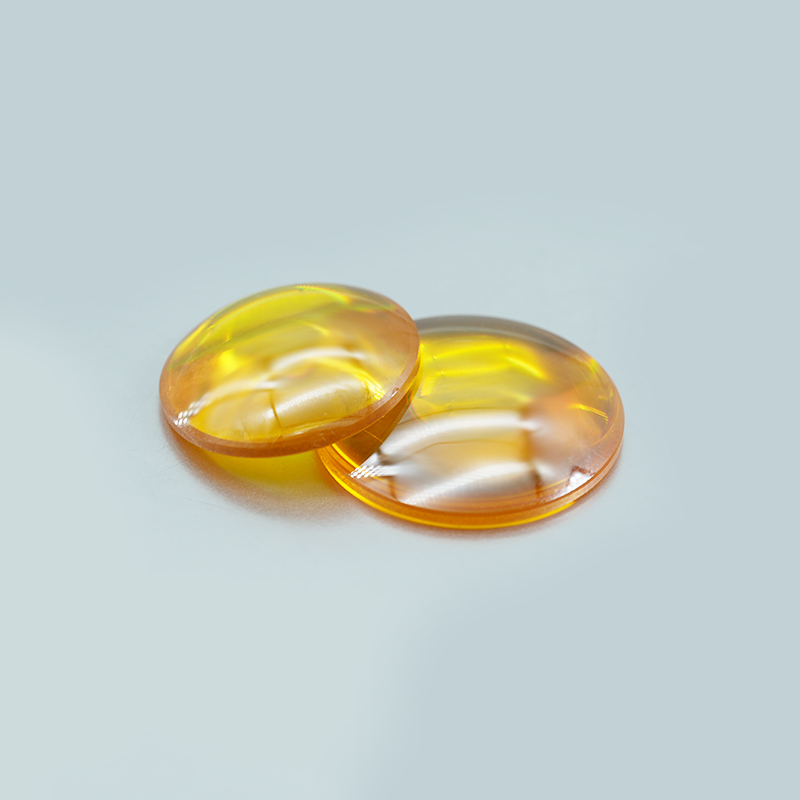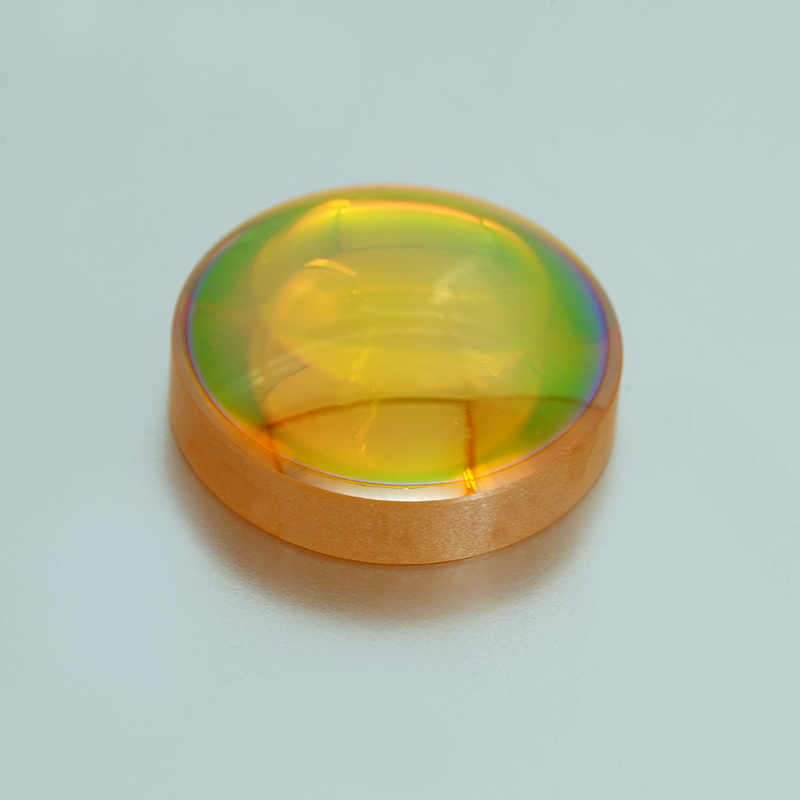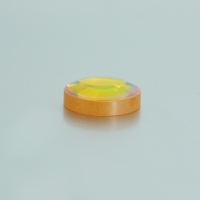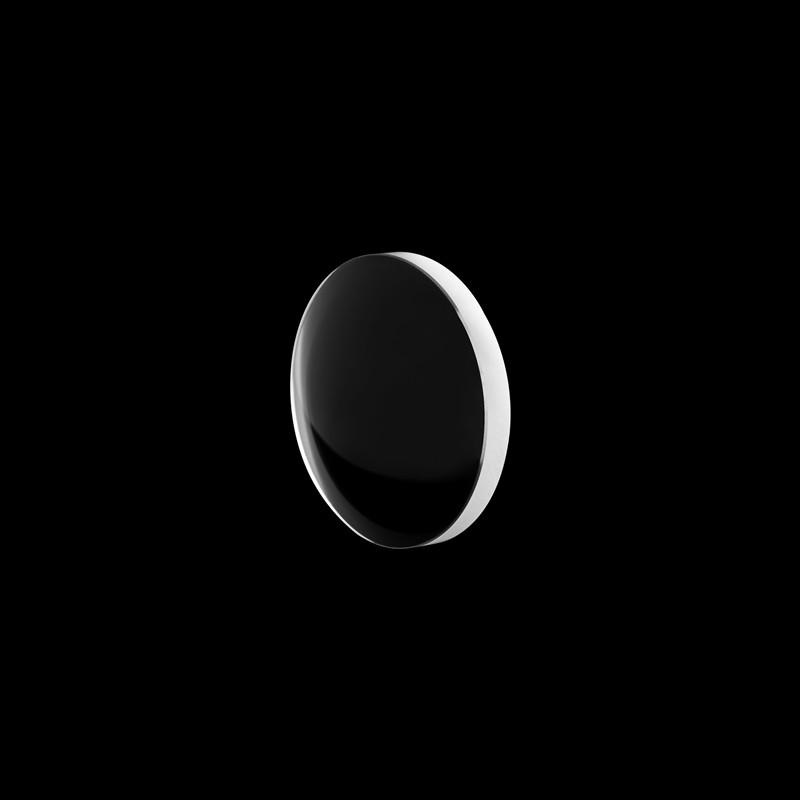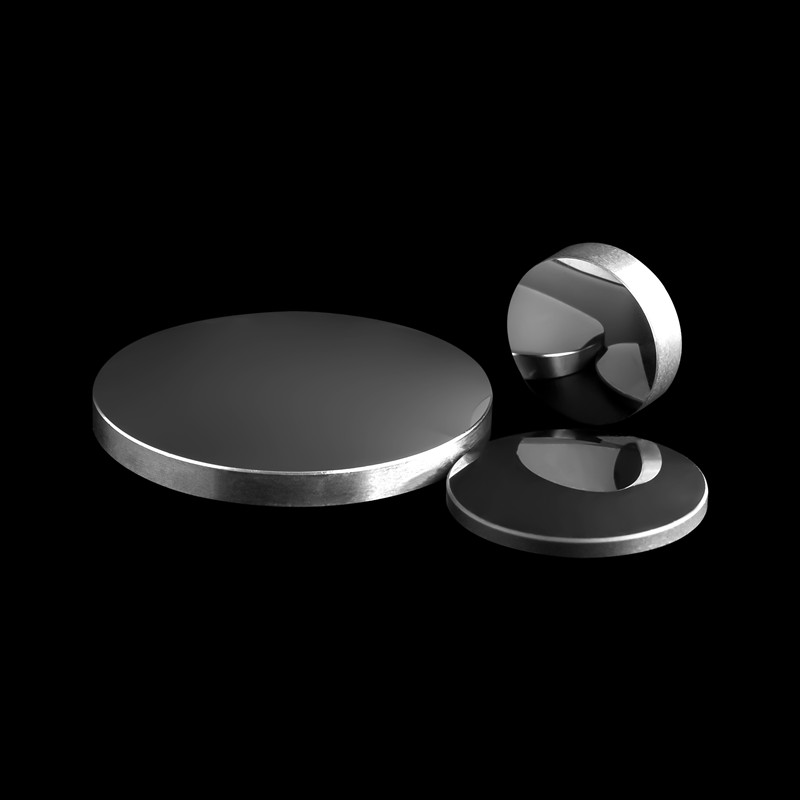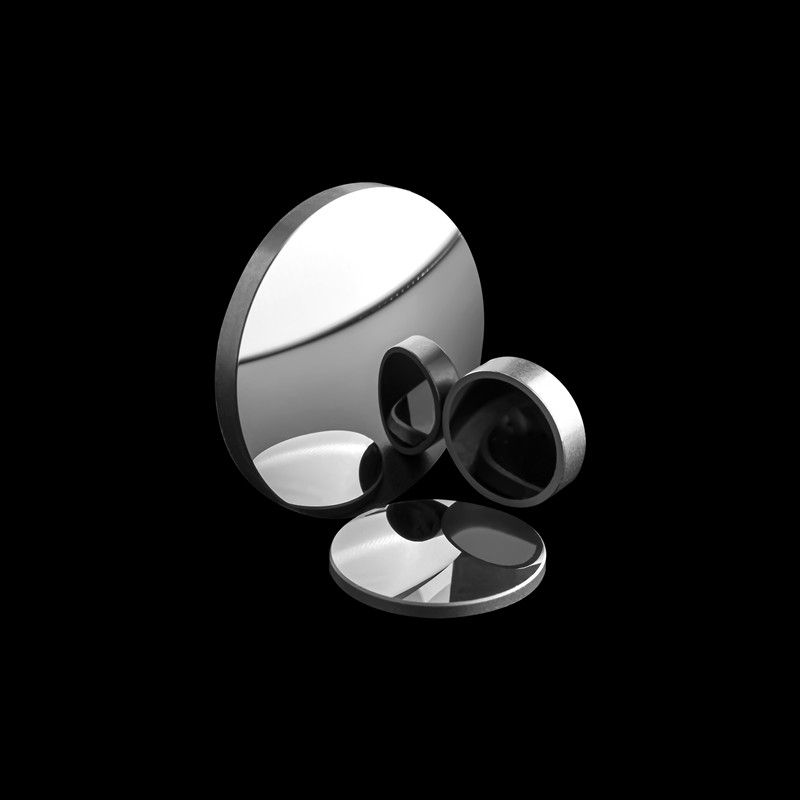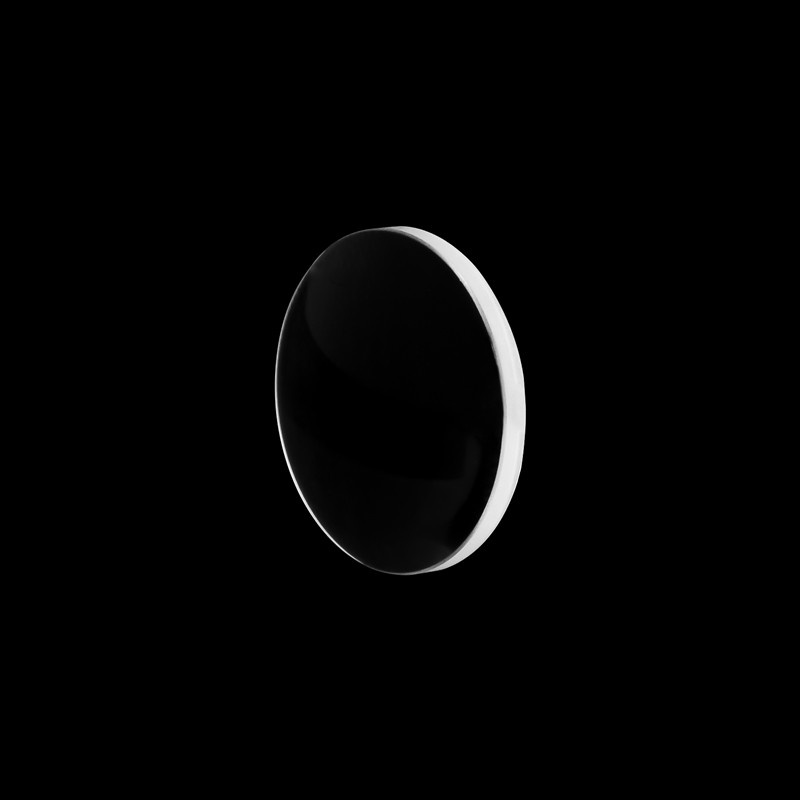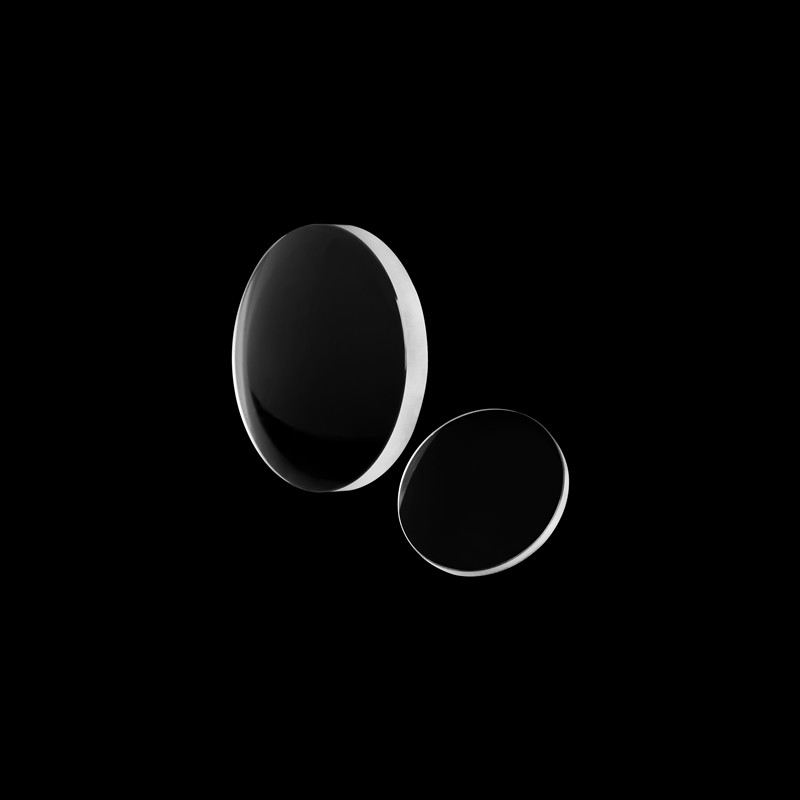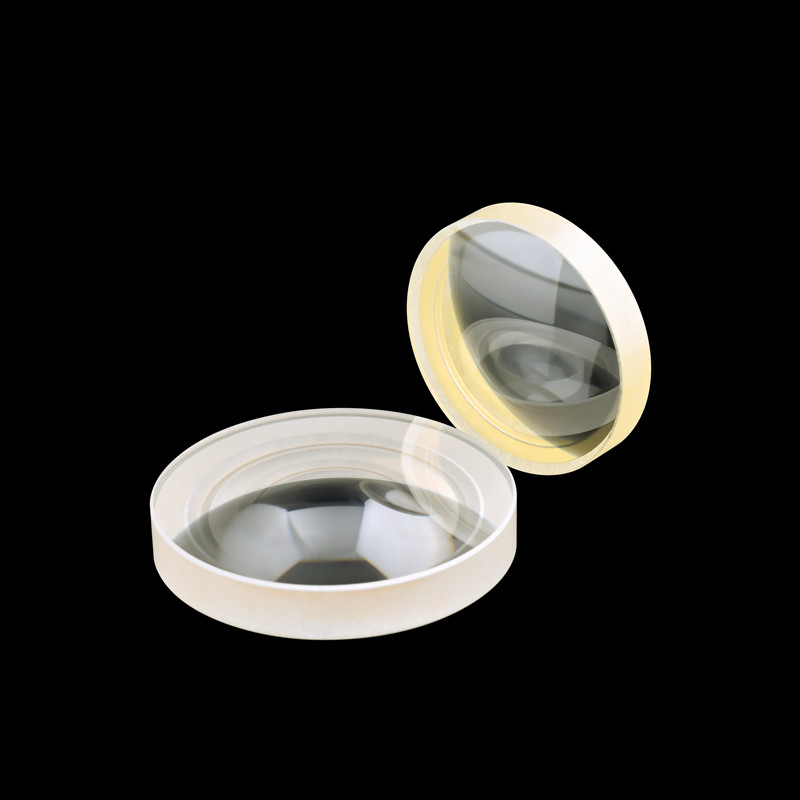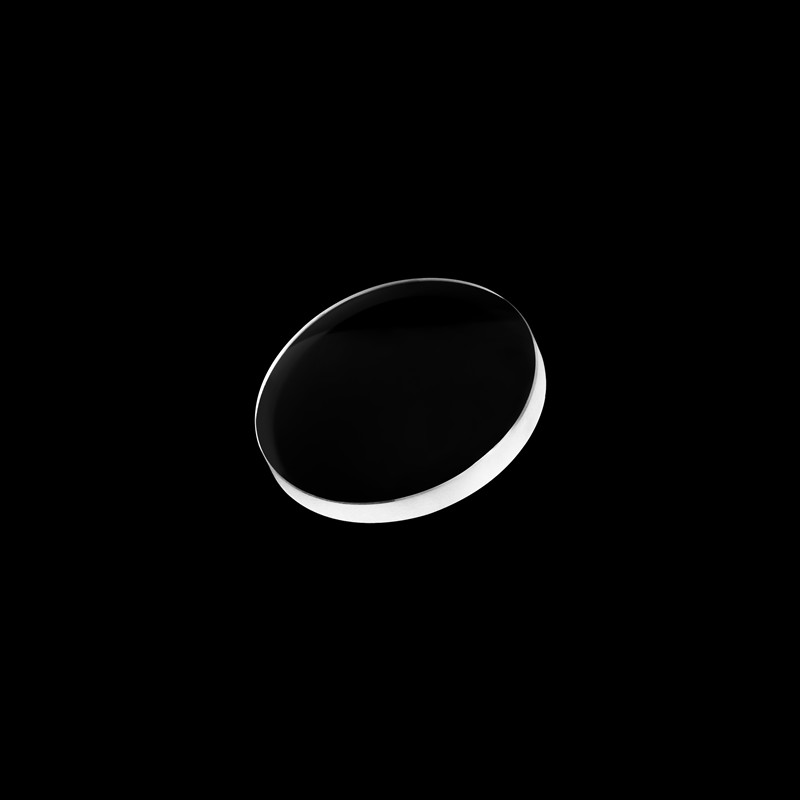Zinc Selenide (ZnSe) Meniscus Lenses
Product Introduction:
Zinc selenide (ZnSe)material has a high tolerance to thermal shock, making it to to be an optical material for high power CO2 laser systems. The hardness is only 2/3 of multispectral grade ZnS, the material is soft and prone to scratching, and the material has a large refractive index, so it needs to be coated with a high hardness anti-reflective film to protect it and obtain a high transmittance. In common spectral range, the scattering is very low.
The meniscus lens is convex on one side and concave on the other. It can be a converging lens or a diverging lens, determined by a combination of refractive index, curvature and radius.
Our Company can provide ZnSe Meniscus Lenses with diameters from 2-300mm and thicknesses from 0.12-60mm (accuracy up to 20-10, 1/10L@633nm), with 4 major processes: gel disc polishing, high speed polishing, ring polishing and CNC polishing, with ZYGO, AFM, reflection and transmission eccentric meters, 15 second goniometer, UV gel centering system, non-contact Laser. Thickness gauge, 2D imager and sphere diameter gauge to ensure the accuracy of data.
Coating Selection:
MgF2, UV-AR,UV-VIS ,VIS-EXT, VIS-NIR, NIR I, NIR II, Telecom-NIR,SWIR ,SWIR ,YAG-BBAR.
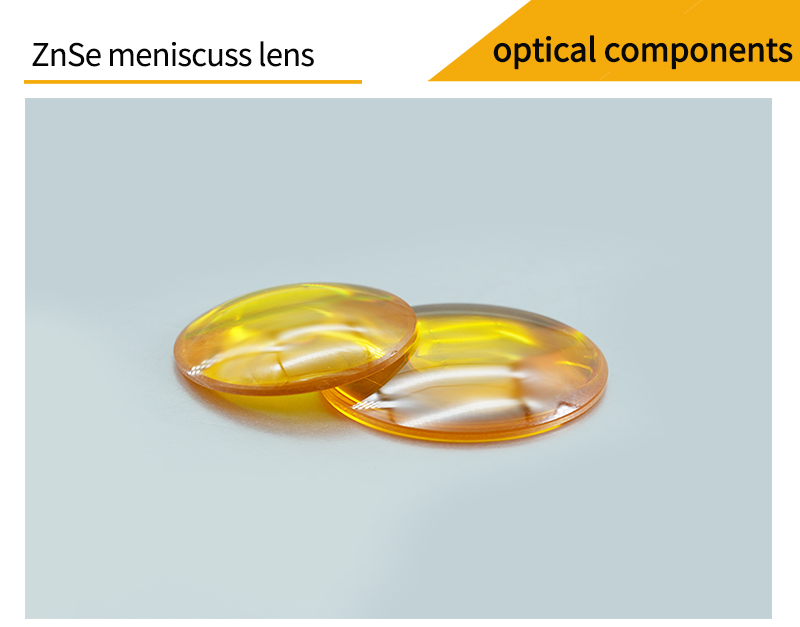
Zinc selenide is a commonly used optical glass material in the infrared band with a transmission band of 600nm-16μm. It has low absorption and thermal shock resistance, and is commonly used in thermal imaging systems, as well as in some visible optical systems, and can be used as a substrate for a variety of optical components. Zinc selenide (ZnSe) meniscus lenses are mainly used for focusing or collimating applications in the mid-wave and long-wave infrared spectra. ZnSe meniscus lenses focus light into a single point and are commonly used for aiming and focusing monochromatic light sources.
It is important to note that zinc selenide is a toxic material, so please wear gloves when using it and wash your hands afterwards.
Our company offer ZnSe meniscus lenses in various sizes and focal lengths.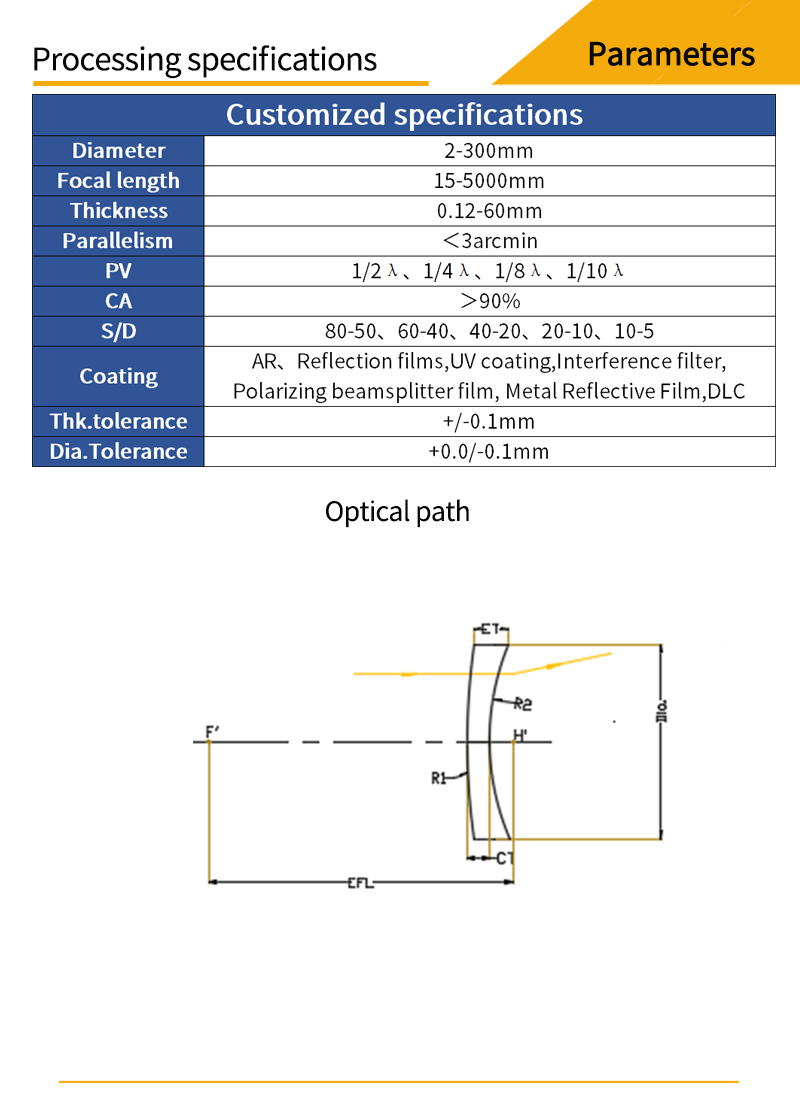
Meniscus Lenses are concave-convex lenses that contain both positive and negative meniscus lenses. The Positive meniscus lenses are thicker in the middle than at the edges, allowing light to converge, and are designed to reduce tertiary spherical aberration. When they are used to converge a collimated beam, the convex side should face the light source to reduce spherical aberration.
The negative meniscus lenses are thinner in the middle than at the edges and are designed to reduce tertiary spherical aberration. When used to diffuse the beam, the convex side should face the beam to reduce spherical aberration.
The important parameters of meniscus lenses are: size, focal length, design wavelength, finish, face accuracy, eccentricity, substrate material and other attributes. Suitable parameters of meniscus lenses can be selected according to specific applications.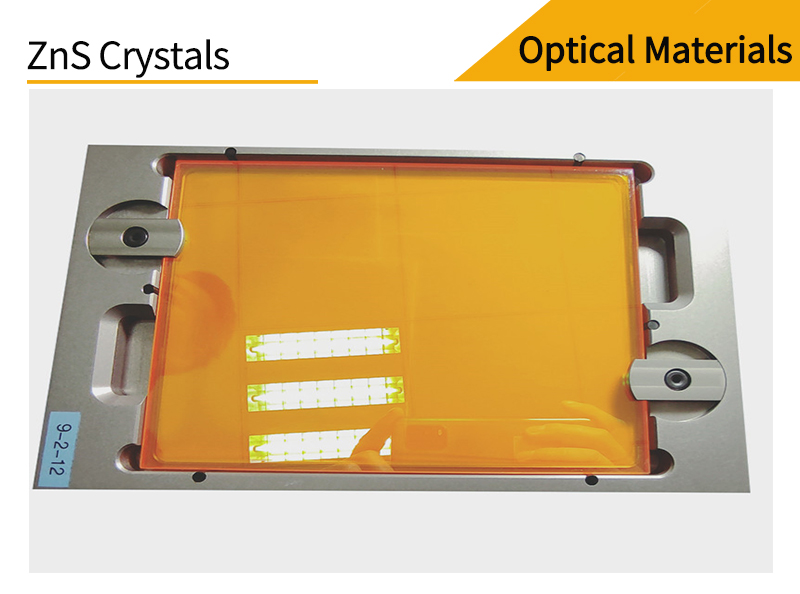
Zinc selenide is a yellow transparent polycrystalline material with a crystalline particle size of about 70 μm and a light transmission range of 0.5-15 μm.Zinc selenide synthesized by chemical vapor deposition (CVD) is basically free of impurity absorption and has very low scattering loss.Due to the low absorption of 10.6 μm wavelength light, zinc selenide is the material of choice for making optics in high power CO2 laser systems. In addition, it is a commonly used material in various optical systems in its entire transmission band.It is also used to make total reflector, semi-reflector, beam expander, flat field lens, mid-infrared lens and far-infrared 10.6μm CO2 power laser with various plano-convex lens, convex-concave crescent cut lens, gold-plated reflector, circular polarizer, beam expander, flat field lens, etc.
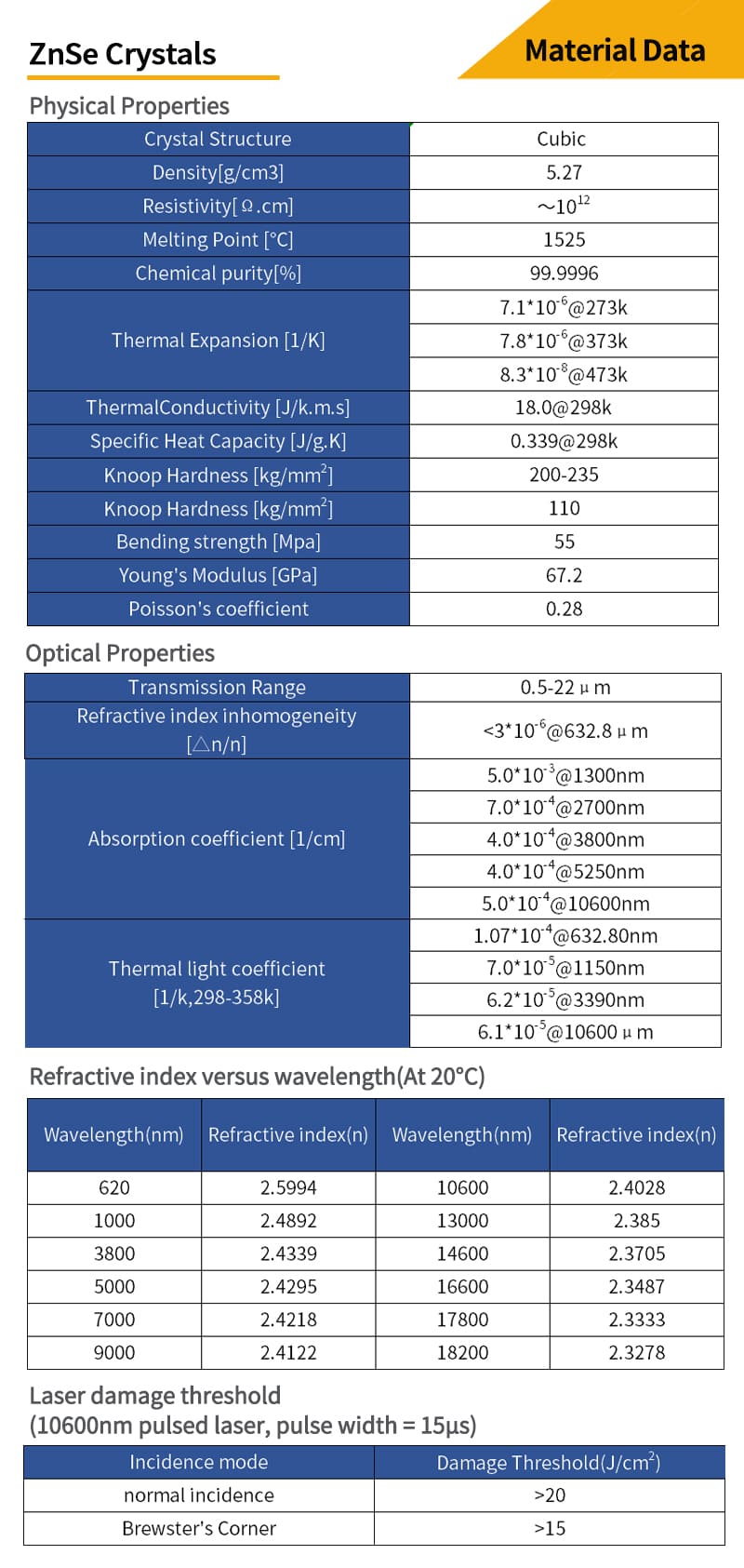
CVD zinc selenide is characterized by high purity, high capability of environment and easy processing. The material has excellent uniformity and consistency and is suitable for CO2 laser and infrared thermal imaging systems.
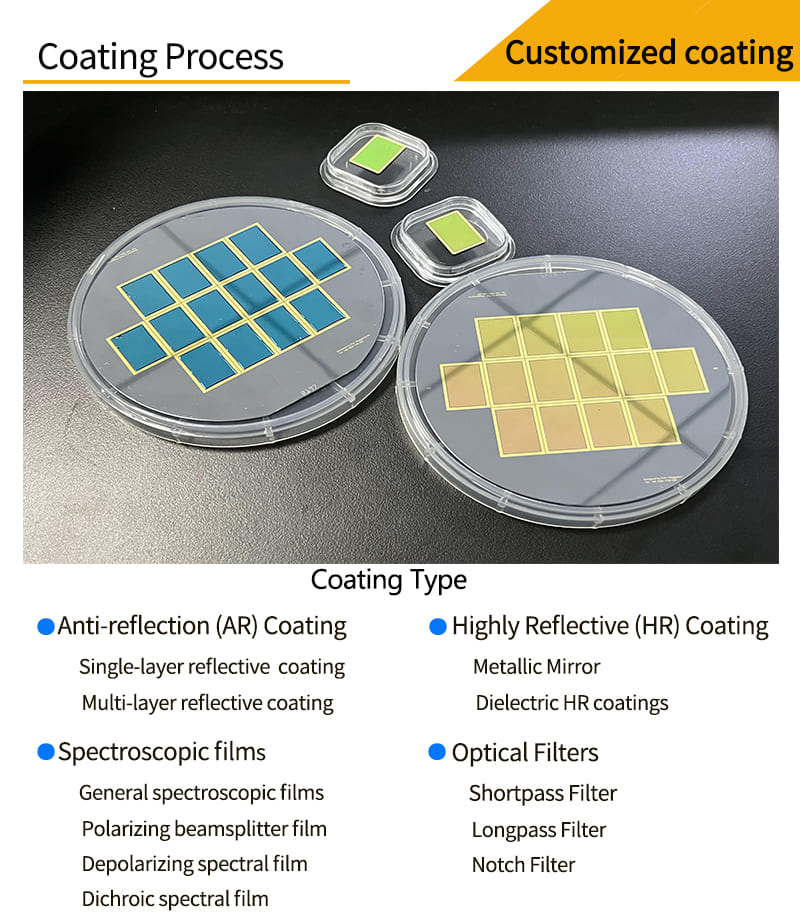
Coating refers to coating a transparent electrolyte film or metal film on the surface of the substrate material by physical or chemical methods. The purpose is to change the reflection and transmission characteristics of the material surface to reduce or increase the reflection, beam splitting, color separation, light filtering, polarization and other requirements.We can provide various optical coatings such as anti-reflective films, high-reflective films, spectral films, and metallic films. Broadband anti-reflective films are available for UV, visible, NIR and mid-infrared wavelengths.
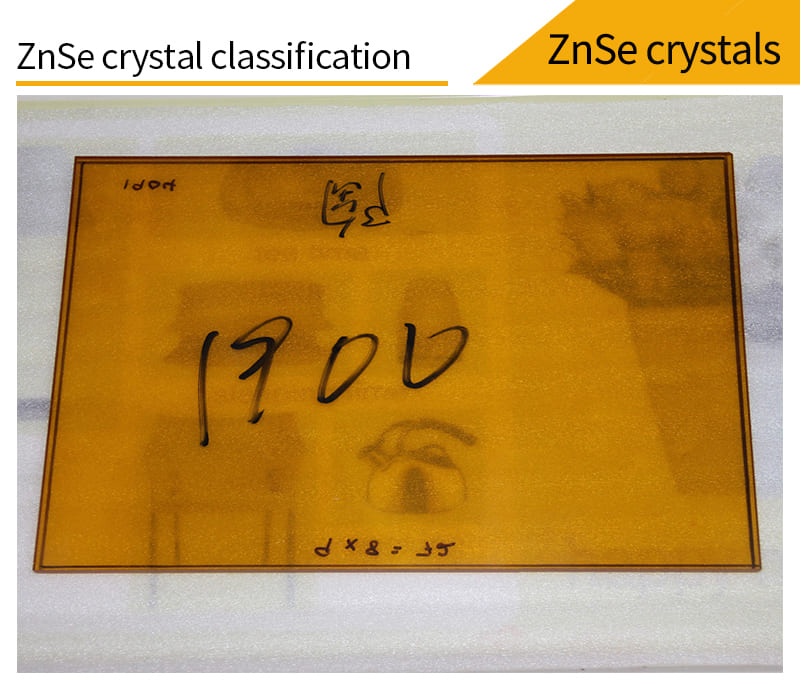
Zinc selenide is a substance synthesized from 5N hydrogen selenide and 5N zinc by chemical vapor deposition (CVD), and the synthesis method itself is a purification process.
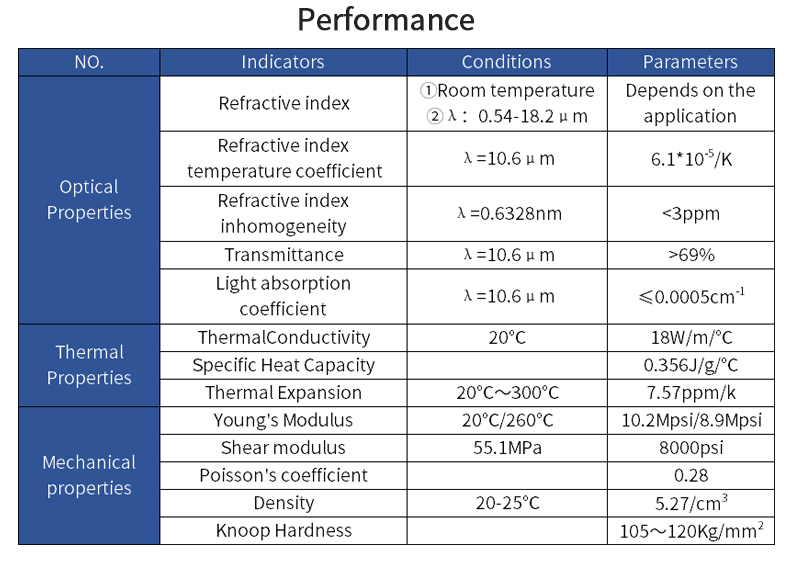
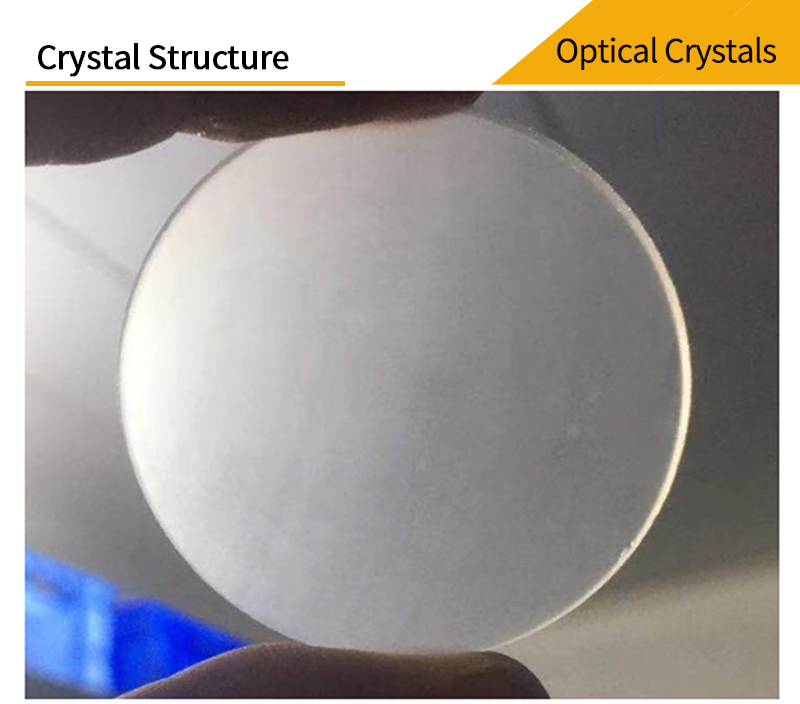
Monocrystalline
●There are no visible grain boundaries or wicker-like stripes on the crystal surface when examined under naked eye daylight.
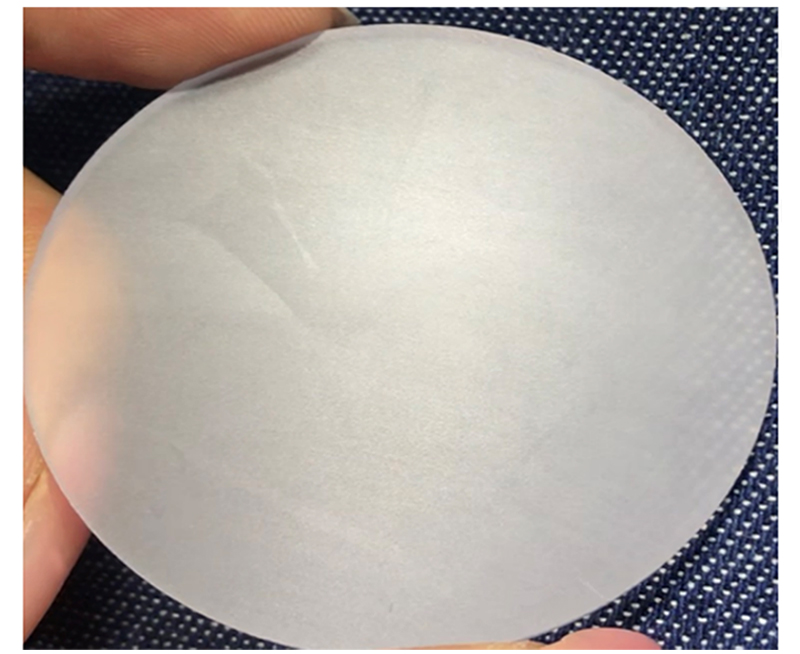
Sub-crystal
●When examined under naked-eye daylight, there are willow stripes on the surface of the crystal with an area < 1/6 (end diameter), and the willow stripes are not visible after polishing .
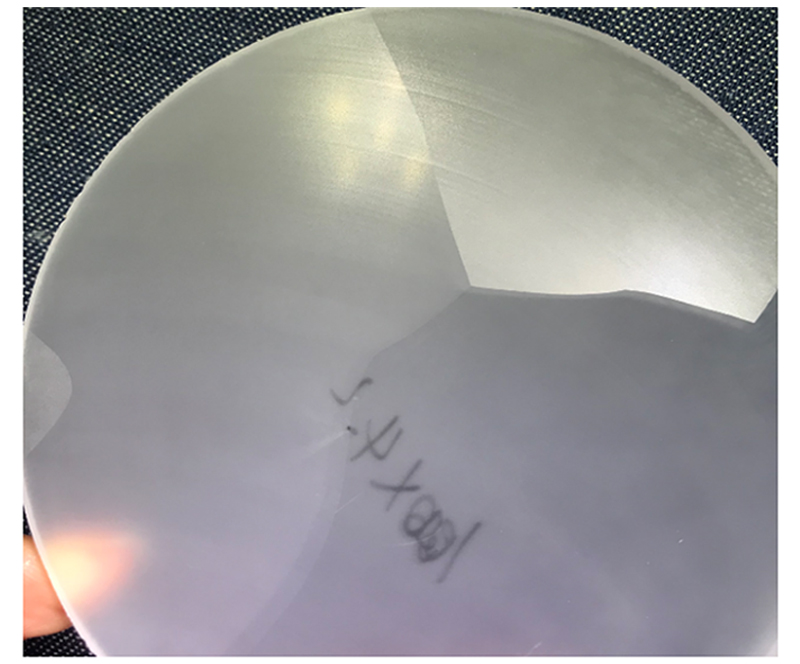
Polycrystalline
●When examined under naked-eye daylight, there are penetrating crystal boundary lines on the surface of the crystal, and the difference in the degree of light and darkness between the two sides of the crystal boundary lines is obvious.

●N-BK7
N-BK7 is the most commonly used optical glass for processing high quality optical components,, with excellent transmittance from visible to near-infrared wavelengths(350-2000nm), and has a wide range of applications in telescopes, lasers and other fields. N-BK7 is generally chosen when the additional benefits of UV fused silica (very good transmittance and low coefficient of thermal expansion in the UV band) are not required.
●UV fused silica
UV fused silica has a high transmission from the UV to NIR (185-2100nm). In addition, UV fused silica has better uniformity and lower coefficient of thermal expansion than H-K9L (N-BK7), making it particularly suitable for high power laser and imaging applications.
●Calcium fluoride
Due to its high transmittance and low refractive index within a wavelength of 180nm-8um, calcium fluoride is often used as windows and lenses in spectrometers and thermal imaging systems. In addition, it has good applications in lasers because of its high laser damage threshold.
●Barium fluoride
Barium fluoride have high transmittance from the 200nm-11um and they are resistant to stronger high-energy radiation. At the same time, barium fluoride has excellent scintillation properties and can be made into various infrared and ultraviolet optical components. However, the disadvantage of barium fluoride is that it is less resistant to water. When exposed to water, the performance degrades significantly at 500℃, but it can be used for applications up to 800℃ in a dry environment. At the same time, barium fluoride has excellent scintillation properties and can be made into various infrared and ultraviolet optical components.It should be noted that when handling barium fluoride material, gloves must be worn at all times and hands must be washed thoroughly after handling.
●Magnesium fluoride
Magnesium fluoride is ideal for applications in the wavelength range of 200nm-6um. Compared to other materials, magnesium fluoride is particularly durable in the deep UV and far IR wavelength ranges. Magnesium fluoride is a powerful material for resistance to chemical corrosion, laser damage, mechanical shock and thermal shock. It is harder than calcium fluoride crystals, but relatively soft compared to fused silica, and has a slight hydrolysis. It has a Nucleus hardness of 415 and a refractive index of 1.38.
●Zinc selenide
Zinc selenide has high transmittance in the 600nm-16um and is commonly used in thermal imaging, infrared imaging, and medical systems. Also, due to its low absorption, zinc selenide is particularly suitable for use in high-power CO2 lasers. It should be noted that zinc selenide is a relatively soft material (Nucleus hardness 120) and is easily scratched, so it is not recommended for use in harsh environments. Extra care should be taken when holding, and cleaning, pinching or wiping with even force, and it is best to wear gloves or rubber finger covers to prevent tarnishing. Cannot be held with tweezers or other tools.
●Silicon
Silicon is suitable for use in the NIR band from 1.2-8um.Because of its low
density, silicon is particularly suitable in applications where weight
requirements are sensitive, especially in the 3-5um . Silicon has a Nucleus
hardness of 1150, which is harder than germanium and not as fragile as
germanium.It is not suitable for transmission applications in CO2 lasers
because of its strong absorption band at 9um.
●Germanium
Germanium is suitable for use in the near-infrared band of 2-16um and is well
suited for infrared lasers. Due to its high refractive index, minimal surface
curvature and low chromatic aberration, germanium does not usually require
correction in low power imaging systems. However, germanium is more
severely affected by temperature, and the transmittance decreases with
increasing temperature; therefore, it can only be applied below 100°C. The
density of germanium (5.33 g/cm³) is taken into account when designing
systems with strict weight requirements. Germanium lenses feature a
precision diamond lathe turned surface, a feature that makes them well suited
for a variety of infrared applications, including thermal imaging systems,
infrared beam splitters, telemetry, and in the forward-looking infrared (FLIR)
field.
●CVD ZnS
CVD ZnS is the only infrared optical material, other than diamond, that covers visible to long-wave infrared (LWIR), full wavelength and even microwave wavelengths, and is currently the most important LWIR window material. It can be used as windows and lenses for high-resolution thermal imaging systems, as well as for advanced applications such as "tri-optical" windows and near-infrared laser/dual-color infrared composite windows.

